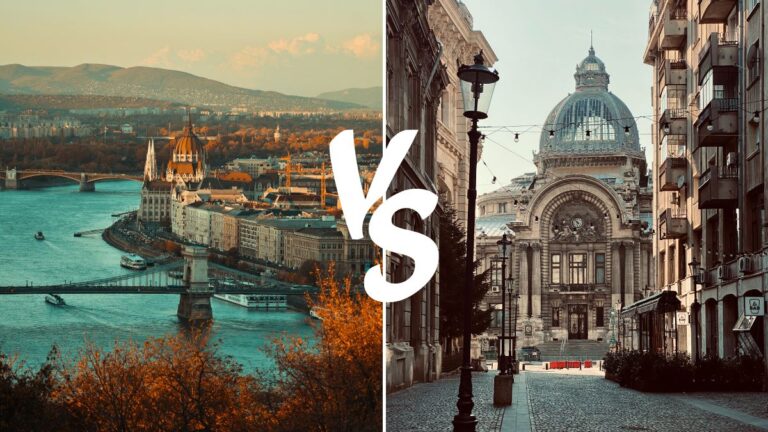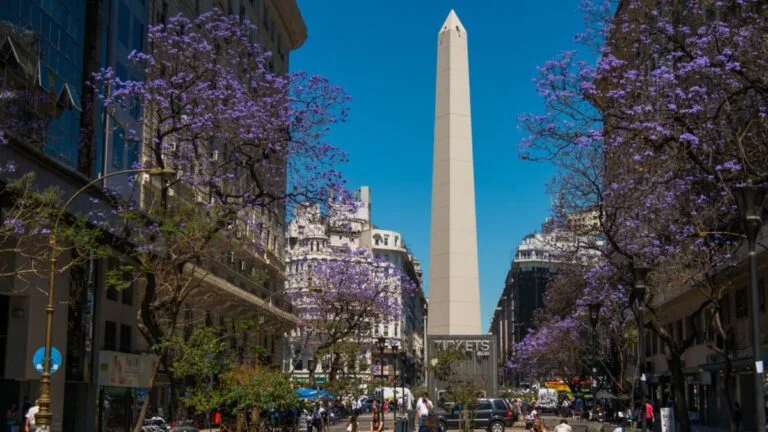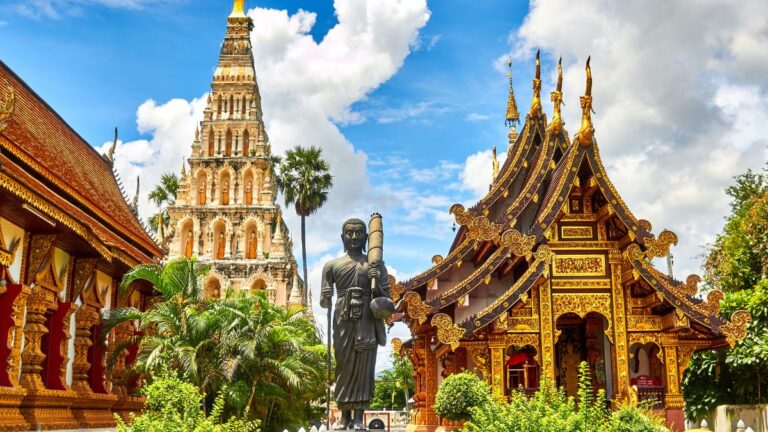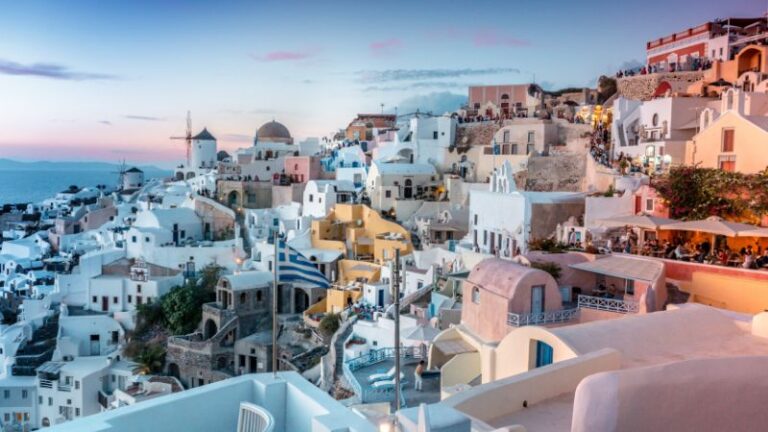50 Best Cities To Visit In Europe (One City Per Every Country)
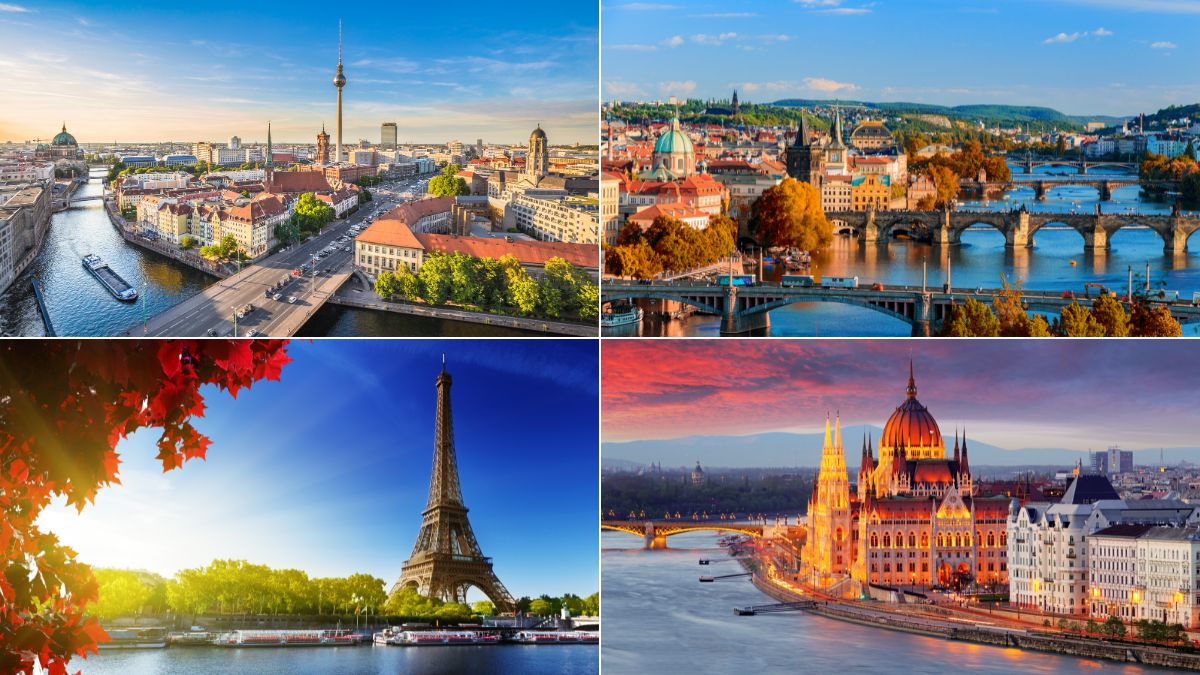
As participants in Amazon Associates and other programs, we earn from qualifying purchases. This comes at no additional cost to you. For more details, see our Affiliate Disclosure.
Spanning from the icy fjords of Greenland to the sun-kissed shores of Cyprus, Europe’s tapestry is woven from 50 distinct threads, each representing a unique country or territory. Whether you’re drawn by ancient ruins, bustling metropolises, or serene landscapes, this list dives deep into the continent’s heart, spotlighting one must-visit city from each of these fascinating locales. Embark on a journey across Europe and discover the beauty that lies within every border.
Note: For the purposes of this article, our definition of “Europe” includes some territories and countries that may not traditionally fall within the continent’s strict boundaries. This includes regions like parts of Turkey, Cyprus, the Faroe Islands, Greenland, Kosovo, and a portion of Western Kazakhstan.
1. Paris, France The City of Lights

Nestled along the banks of the Seine, Paris is an unparalleled fusion of history, art, and culture. As the capital of France, it’s home to iconic landmarks like the Eiffel Tower, the Louvre, and Notre Dame Cathedral. The city’s café culture, bohemian districts like Montmartre, and grand boulevards echo tales of artists, writers, and revolutionaries.
Wandering its streets, visitors can explore world-class museums, indulge in gourmet cuisine, or simply relax in one of its many gardens or by the riverside. Every corner of Paris whispers stories of love, rebellion, art, and innovation, making it a must-visit for anyone touring Europe.
2. Rome, Italy The Eternal City

With millennia of rich history, Rome stands as a testament to the grandeur of the Roman Empire and the enduring spirit of the Italian Renaissance. Here, ancient ruins like the Colosseum and the Roman Forum coexist with bustling piazzas and ornate Catholic basilicas.
Venturing through Rome feels like stepping back in time. Whether savoring a gelato near the Pantheon, tossing a coin into the Trevi Fountain, or marveling at the Sistine Chapel’s ceiling in Vatican City, the capital offers a timeless journey through layers of history, faith, and Italian culture.
3. Berlin, Germany Metropolis of Modernity

Berlin, once divided, now stands as a symbol of unity and progressive thinking. Its troubled history, marked by the Berlin Wall and World War memorials, contrasts with its modern, vibrant art and nightlife scenes. The Brandenburg Gate and the East Side Gallery showcase the city’s journey from division to reunion.
Moreover, Berlin is an epicenter for contemporary arts, technology, and music. With its multitude of museums, historic neighborhoods, and avant-garde clubs, it beckons travelers seeking a blend of history and modernity, all set against the backdrop of Germany’s relentless drive for innovation.
4. Athens, Greece The Cradle of Western Civilization
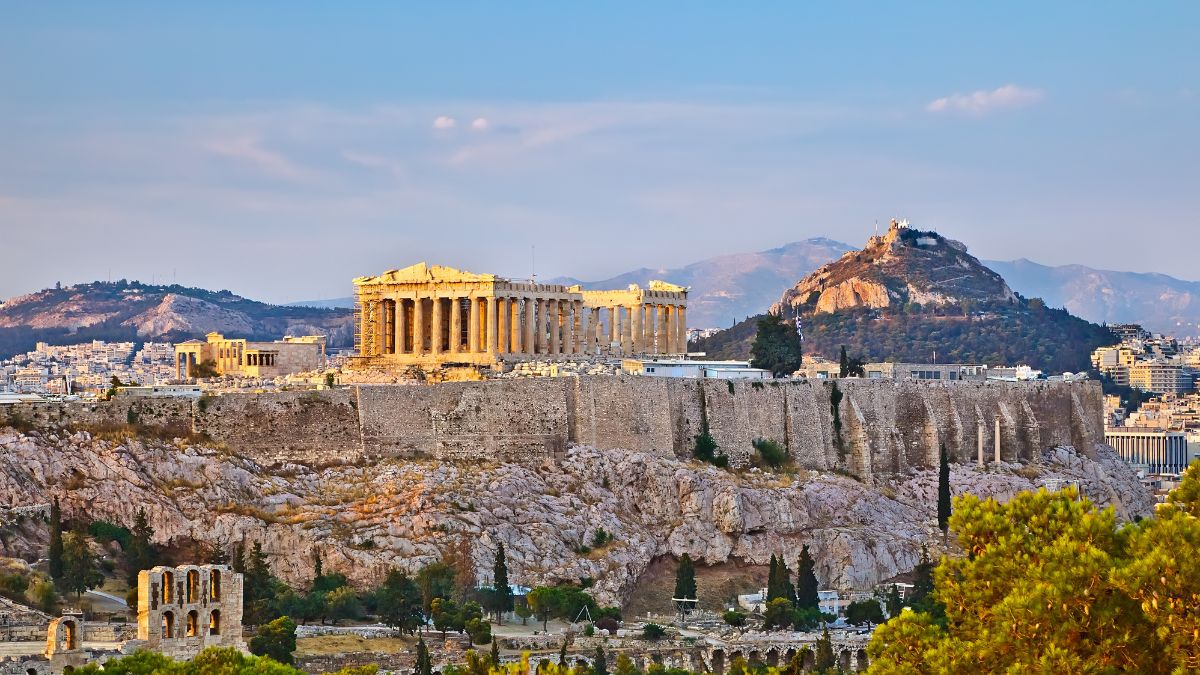
Athens, the capital of Greece, is where democracy, philosophy, and arts took their earliest forms. Dominated by the mighty Acropolis, a citadel boasting ancient temples like the Parthenon, Athens seamlessly blends the old with the new. The city’s historical significance is matched by its lively Mediterranean spirit, seen in its bustling markets, alfresco dining, and vibrant street art.
A city of contrasts, Athens allows visitors to walk in the footsteps of Plato and Socrates by day, and by night, experience its contemporary music, theater, and gastronomy scenes. Rich in myth and modernity, Athens remains a beacon of human achievement and aspiration.
5. Madrid, Spain The Heartbeat of Iberia

Spain’s sun-soaked capital, Madrid, is a hub of art, culture, and spirited festivities. Home to the world-renowned Prado Museum, Retiro Park, and the Royal Palace, Madrid embodies the rich history and passion of the Spanish people. The city’s grand avenues are lined with baroque buildings, modern skyscrapers, and terracotta rooftops, providing a feast for the eyes.
By night, Madrid truly comes alive. From Flamenco shows in traditional tablaos to the endless tapas bars of La Latina and the pulsating beats of its nightclubs, Madrid offers a kaleidoscope of experiences. Whether indulging in its culinary delights or diving into its art scene, the city offers a passionate embrace of life.
6. Lisbon, Portugal The City of Seven Hills

Lisbon, cascading over rolling hills and overlooking the mighty Tagus River, is a city soaked in golden sunlight and rich maritime history. The pastel-colored buildings, historic trams, and intricate tiles – azulejos – narrate tales of explorers, trade, and Fado music. The Belém Tower and Jerónimos Monastery stand as reminders of the Age of Discovery.
Strolling through the narrow alleys of Alfama or riding the tram to São Jorge Castle, one can feel the soulful melodies of Fado resonating. As evening falls, the vibrant nightlife in Bairro Alto beckons, with traditional taverns and modern bars offering a taste of Portugal’s spirited culture.
7. Vienna, Austria The Imperial Jewel
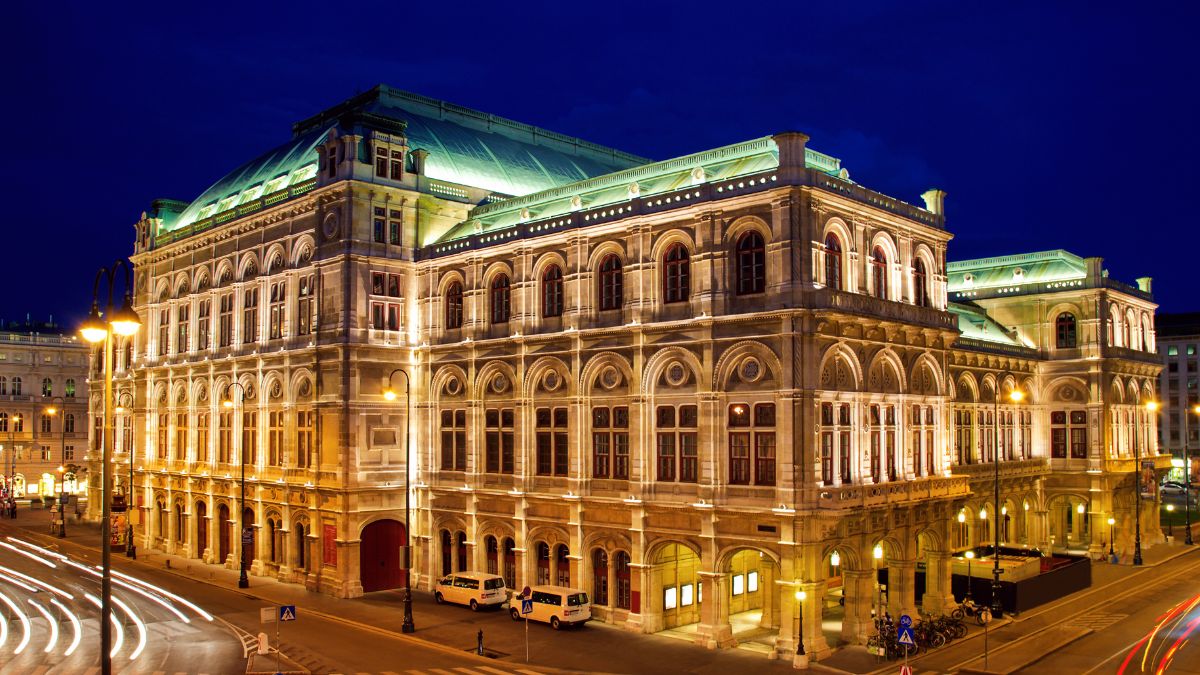
Vienna, with its grand palaces, baroque streetscapes, and renowned coffeehouses, is the epitome of old-world charm. Once the seat of the Habsburg monarchy, the city today stands as a global capital of art, music, and architecture. The Schönbrunn Palace, St. Stephen’s Cathedral, and the Belvedere are architectural marvels that dot its skyline.
Beyond its historic splendors, Vienna is also a modern and lively city. Concert halls reverberate with the timeless music of Mozart and Strauss, while contemporary art venues, chic cafés, and Danube riverside lounges give it a fresh, youthful vibe. Vienna, in essence, is a melodious blend of the past and the present.
8. Budapest, Hungary The Pearl of the Danube

Straddling the majestic Danube River, Budapest is a city of thermal baths, grand boulevards, and architectural marvels. The Buda Castle, the Gothic Matthias Church, and the iconic Chain Bridge are testaments to Hungary’s storied past. The city is a mosaic of Roman ruins, Ottoman-era spas, and Art Nouveau buildings.
While its thermal baths offer relaxation, the city’s lively ruin pubs, situated in abandoned buildings and decorated with eclectic art, provide a unique nightlife experience. Whether one is soaking in the Gellért Baths, admiring the panorama from Fisherman’s Bastion, or exploring the Central Market Hall, Budapest promises an enchanting escape.
9. Dublin, Ireland The Celtic Heartland
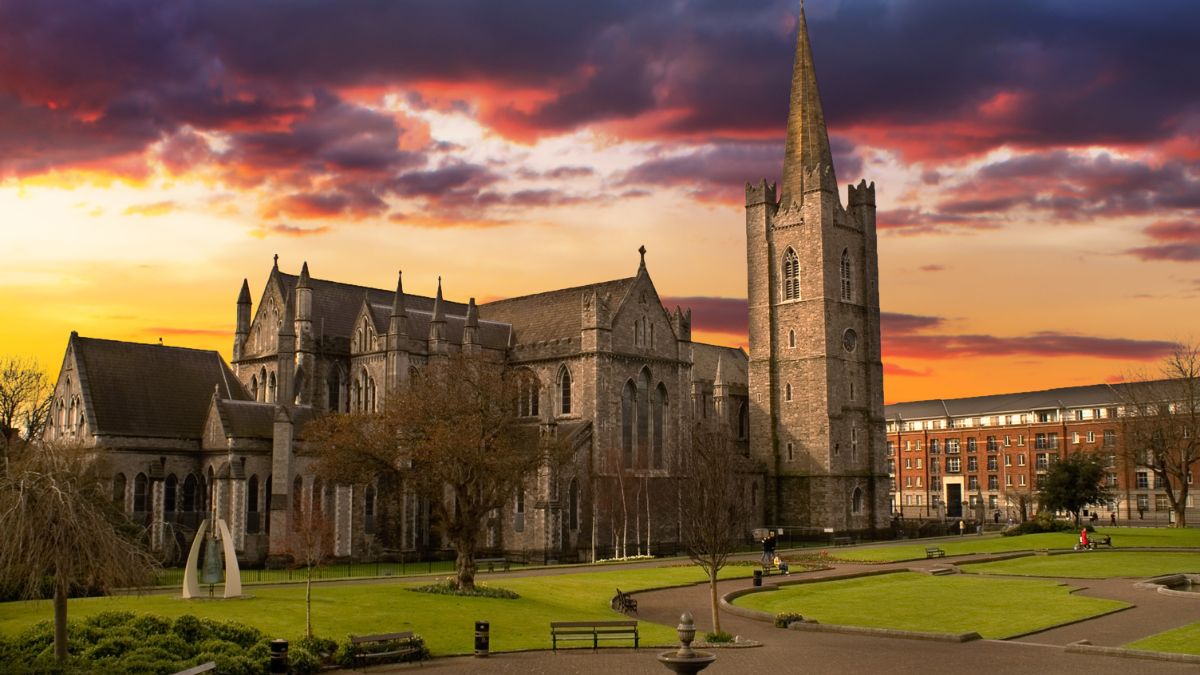
Dublin, the lively capital of Ireland, is a blend of historic landmarks and vibrant modern life. Rich in literature, it’s the city of Yeats, Joyce, and Beckett. The cobblestone streets of Temple Bar, the towering spires of St. Patrick’s Cathedral, and the historic Trinity College with the Book of Kells, all weave tales of Dublin’s layered past.
But Dublin isn’t just about history. It’s also a city of jovial gatherings, celebrated in its traditional pubs where folk music flows as freely as Guinness. From its river walks along the Liffey to its bustling O’Connell Street, Dublin extends a warm, Irish welcome to all.
10. Prague, Czech Republic The City of a Hundred Spires

The enchanting city of Prague seems lifted straight from a fairy tale. Its skyline, punctuated by Gothic cathedrals and Baroque palaces, reflects in the Vltava River, giving it a magical aura. Prague Castle, Charles Bridge, and the Astronomical Clock in Old Town Square are some of its treasured landmarks.
While its historic heart showcases cobblestone streets and medieval squares, Prague’s modern pulse can be found in its bustling beer gardens, contemporary art spaces, and vibrant nightlife. It’s a city where legends of golems and ghostly tales coexist with Bohemian art and Czech traditions, making every visit unforgettable.
11. Stockholm, Sweden The Venice of the North

Comprising 14 islands interconnected by over 50 bridges, Stockholm’s charm lies in its waterfront vistas and historic quarters. The medieval streets of Gamla Stan, with its Royal Palace and grand Storkyrkan Cathedral, are a testament to Sweden’s rich past. Museums like the Vasa and the ABBA offer unique glimpses into cultural milestones.
As the sun sets, the city pulsates with modern Nordic energy. Contemporary design studios, bustling food halls, and lively bars in Södermalm showcase Stockholm’s avant-garde side. Here, tradition meets innovation, making the Swedish capital a thrilling blend of old and new.
12. Oslo, Norway Gateway to the Fjords
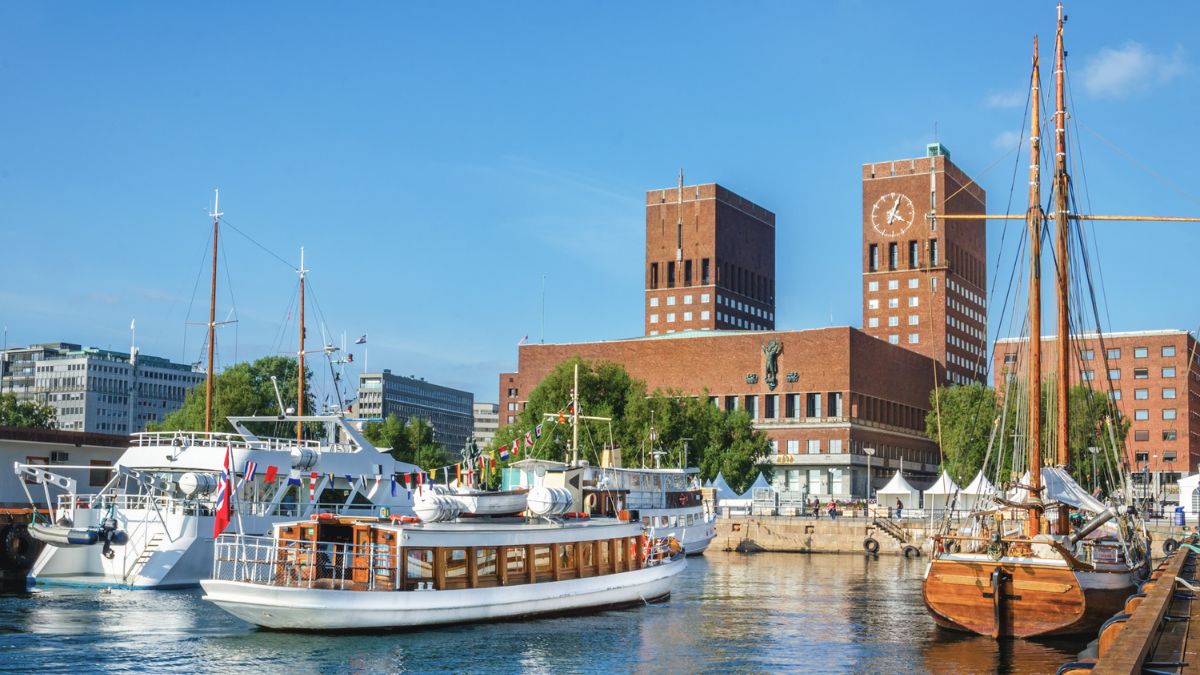
Oslo, nestled between the Oslofjord and forested hills, is not just Norway’s capital but also its pulsating cultural hub. The Viking Ship Museum and the Munch Museum stand as testaments to the nation’s rich maritime history and artistic heritage. The futuristic Oslo Opera House and the urban renewal around the waterfront are symbols of the city’s innovative spirit.
Despite its modernity, Oslo remains deeply connected to nature. Vigeland Park, with its intriguing sculptures, and the walking trails in Nordmarka provide serene escapes. Whether seeking history, art, or the allure of the Northern Lights, Oslo is a captivating Nordic gem.
13. Copenhagen, Denmark The Scandinavian Dream
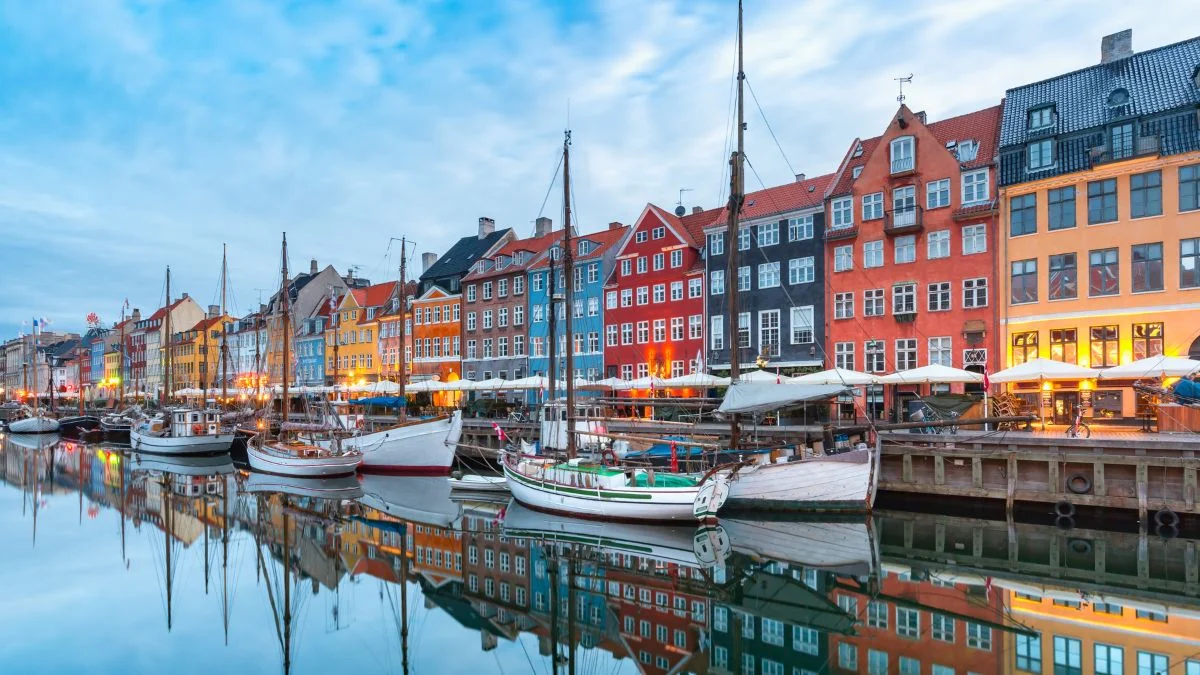
Copenhagen, with its bicycle-filled streets and colorful Nyhavn harbor, epitomizes Danish “hygge” (coziness). Historic landmarks like Rosenborg Castle and the Round Tower blend seamlessly with modern architectural marvels like the Black Diamond. The Tivoli Gardens, a historic amusement park, brings joy to visitors of all ages.
The city also takes pride in its sustainability initiatives, bustling food scene, and design excellence. From savoring smørrebrød in local eateries to exploring the free-town of Christiania, Copenhagen offers a diverse array of experiences. It’s a city where fairy tales, championed by Hans Christian Andersen, come to life.
14. Reykjavik, Iceland Land of Fire and Ice
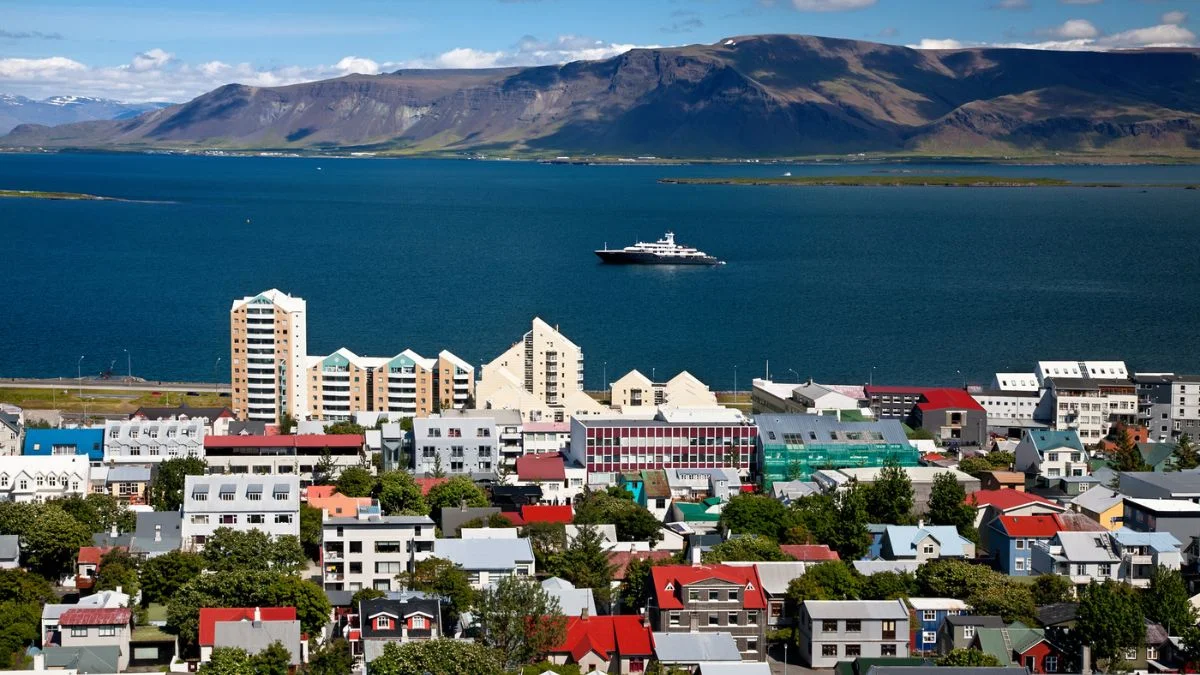
Reykjavik, the world’s northernmost capital, is a city of contrasts. Nestled on the coast of Iceland, it serves as a gateway to a land where volcanoes, geysers, and glaciers dominate the landscape. Its landmarks, like the Hallgrímskirkja church and the Harpa Concert Hall, mirror the country’s unique blend of tradition and modernity.
While the city itself offers a thriving arts scene, cozy cafes, and vibrant nightlife, its proximity to nature is unmatched. Just a short drive away, one can experience the Blue Lagoon’s geothermal waters or the mesmerizing Northern Lights. Reykjavik is the starting point for an Icelandic adventure that promises the extraordinary.
15. Helsinki, Finland The Baltic Beacon

Perched on the edge of the Baltic Sea, Helsinki marries classic Finnish design with natural beauty. The city, with its neoclassical Senate Square and the innovative Kamppi Chapel of Silence, reflects Finland’s journey through time. Museums like the Kiasma and Design Museum showcase the nation’s artistic flair.
Beyond its architectural delights, Helsinki offers serene seafronts, bustling market squares, and lush forests. The Suomenlinna Sea Fortress and the vibrant Esplanadi Park are just glimpses into the city’s diverse offerings. With its sauna culture, design districts, and midnight sun festivals, Helsinki stands as a beacon of Nordic charm.
16. Warsaw, Poland Phoenix of the East
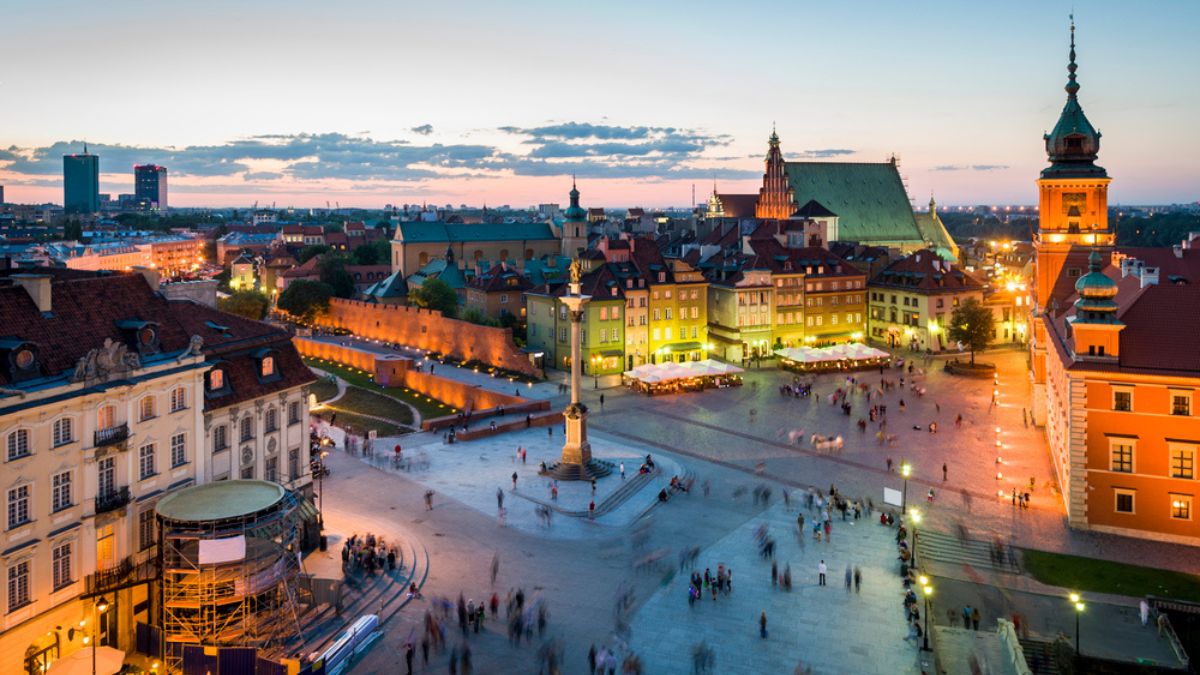
Emerging from a tumultuous history, Warsaw stands as a symbol of resilience and rebirth. Its meticulously reconstructed Old Town, a UNESCO World Heritage Site, boasts of the Royal Castle, Market Square, and the iconic Warsaw Mermaid statue. The city’s skyline is a blend of historic palaces, Soviet-era blocks, and modern skyscrapers.
Beyond its facades, Warsaw is a hub of Polish culture, music, and culinary delights. From the haunting history displayed at the Warsaw Uprising Museum to the lively bars of Nowy Świat, Warsaw offers a journey through Poland’s past while firmly rooted in the present.
17. Brussels, Belgium The Capital of Europe
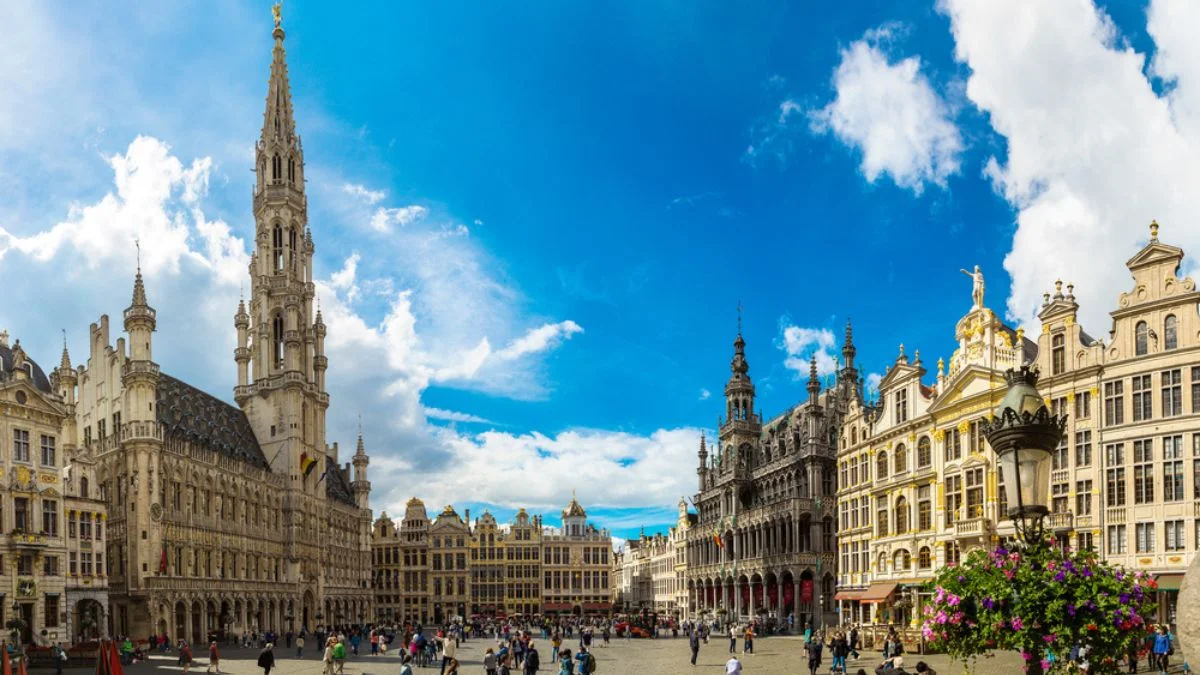
As the de facto capital of the European Union, Brussels boasts a cosmopolitan flair, intricate Gothic architecture, and, of course, world-famous chocolates. The Grand-Place, with its opulent guild houses and the Town Hall, is a testament to the city’s rich history. Nearby, the Atomium and the European Parliament represent its progressive spirit.
But there’s more to Brussels than politics and architecture. It’s a city of festivals, art nouveau cafes, and vibrant markets. Dive into its culinary scene with Belgian waffles, truffles, and craft beers. Brussels seamlessly combines its roles as a political powerhouse and a beacon of European culture.
18. Amsterdam, Netherlands The Canal-Crossed Gem

Amsterdam, with its winding canals, historic bridges, and narrow houses, is a city steeped in charm and history. The Anne Frank House, the Rijksmuseum, and the Van Gogh Museum offer deep dives into times gone by, while the vibrant De Wallen and Jordaan districts pulse with life.
Known for its liberal spirit, Amsterdam boasts bustling flower markets, iconic windmills, and bike-filled streets. As you cruise along its canals or wander through its cobbled lanes, you’ll discover a city that’s as passionate about its tulips as it is about art, culture, and freedom.
19. Zurich, Switzerland The Alpine Metropolis
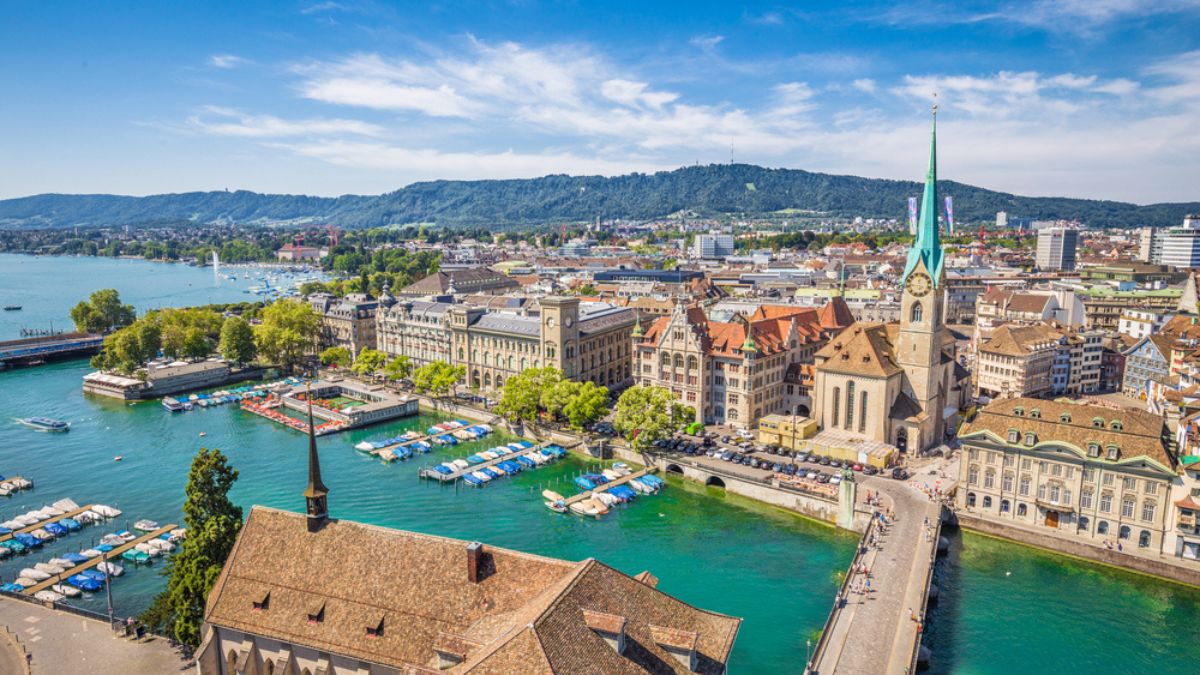
Nestled at the foot of the Alps and along the shores of Lake Zurich, this city is a harmonious blend of natural beauty and urban sophistication. Its Old Town, with narrow alleys and historic churches like Grossmünster, whispers tales of the medieval era. Meanwhile, the Bahnhofstrasse offers one of the world’s most exclusive shopping experiences.
Zurich is more than its luxurious image. The city is a global financial hub, but it also boasts a thriving arts scene, exemplified by the Kunsthaus Zurich. Whether you’re indulging in Swiss chocolates, exploring its museums, or taking lakeside strolls, Zurich provides an unmatched Swiss experience.
20. Belgrade, Serbia The Confluence of Civilizations
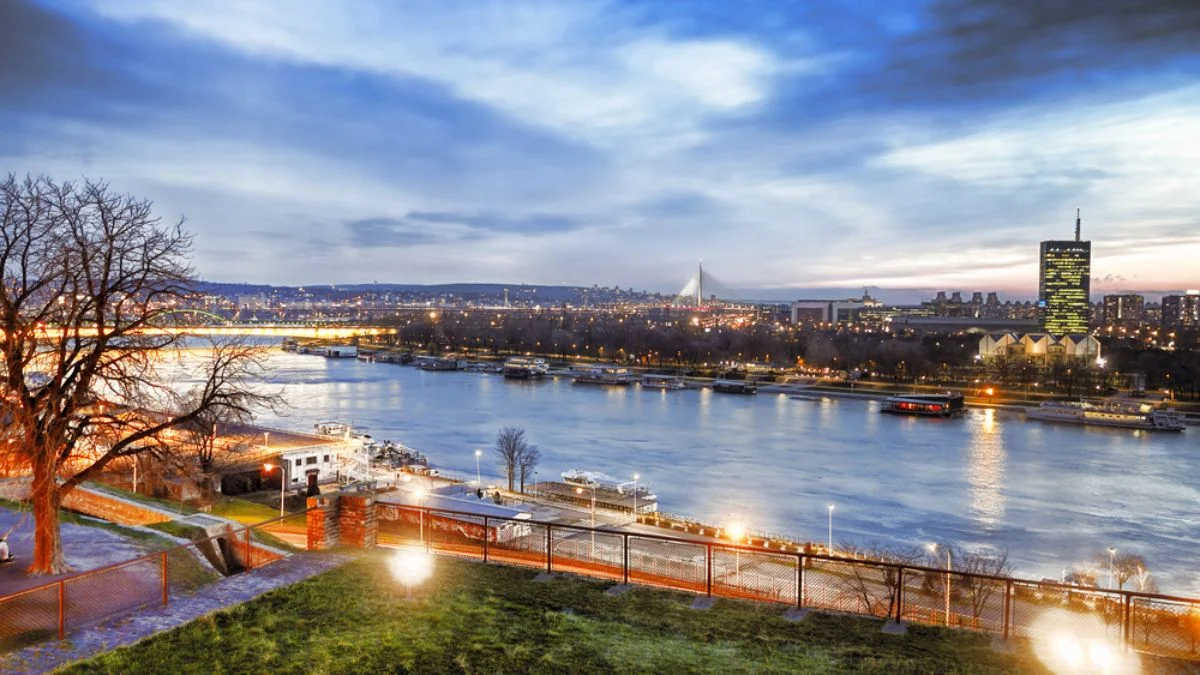
Perched at the meeting point of the Danube and Sava rivers, Belgrade has been a crossroads of cultures for centuries. Its Kalemegdan Fortress offers panoramic views and tales of Byzantine, Ottoman, and Austro-Hungarian influences. The bohemian Skadarlija street and the modern Savamala district reflect the city’s diverse spirit.
Belgrade is known for its vibrant nightlife, with floating river clubs and underground venues. Its eclectic architecture, historic squares, and passionate arts scene make it a unique Balkan gem. As you navigate its streets, Belgrade unveils layers of history, resilience, and undying spirit.
21. Bucharest, Romania The Little Paris of the East
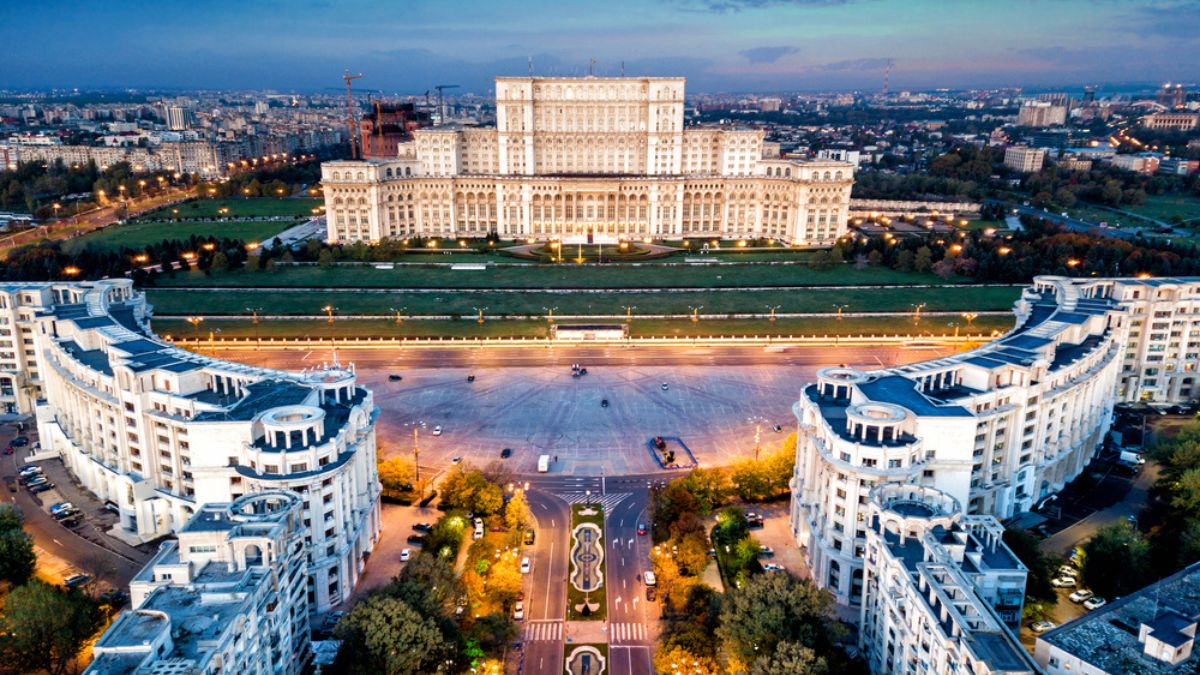
Once known for its wide tree-lined boulevards and elegant Belle Époque buildings, Bucharest has earned its nickname as the “Little Paris”. The Romanian Athenaeum and the Arch of Triumph stand as symbols of its grand past. The colossal Palace of Parliament, however, tells a story of its more recent history under Communist rule.
Venture deeper into Bucharest and you’ll find a city rejuvenating itself. Revitalized urban spaces, bustling cafes, and an emerging arts scene are testaments to its resilience. From the tales of Dracula to the vibrant nightlife in Lipscani, Bucharest offers a fusion of history and modernity.
22. Sofia, Bulgaria The Ageless City
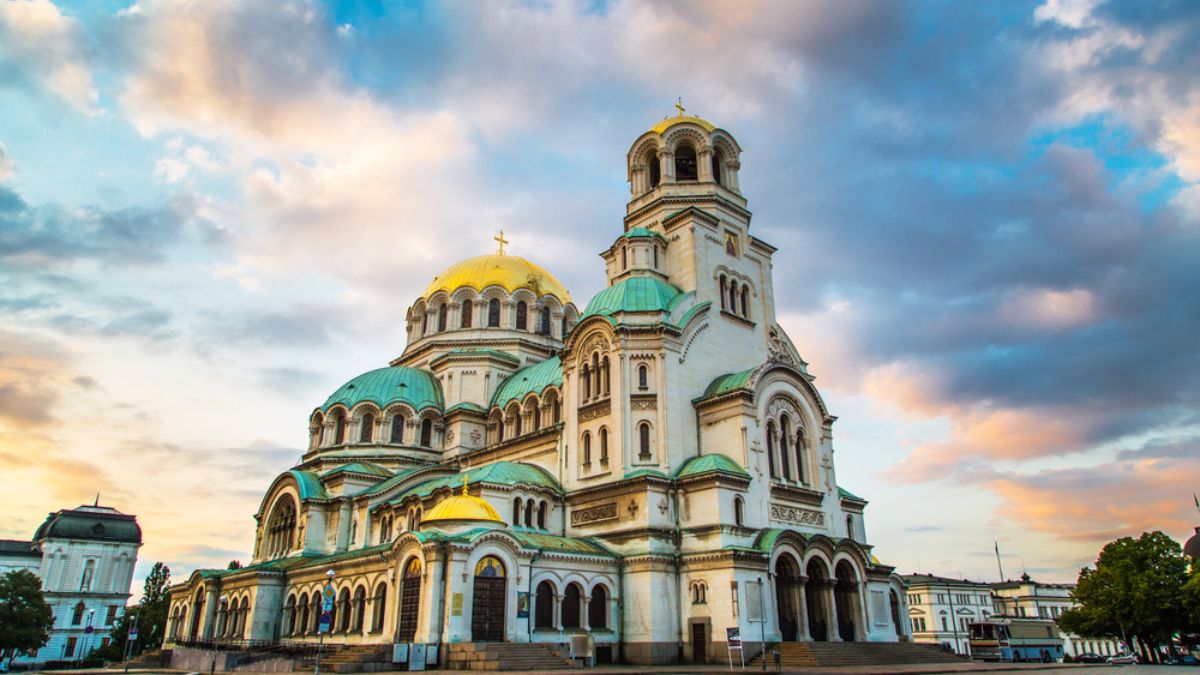
Sofia, one of Europe’s oldest cities, has seen the rise and fall of numerous empires, leaving behind a blend of Roman, Ottoman, and Byzantine influences. The St. Alexander Nevsky Cathedral, with its golden domes, stands in contrast to the ancient ruins scattered throughout the city.
Despite its deep historical roots, Sofia is a dynamic and forward-looking capital. Vitosha Boulevard is a shopper’s delight, while the nearby Vitosha Mountain offers nature enthusiasts a quick escape. In Sofia, ancient churches and Roman theaters coexist with urban parks, Soviet architecture, and a vibrant youth culture.
23. Valletta, Malta The Fortress City
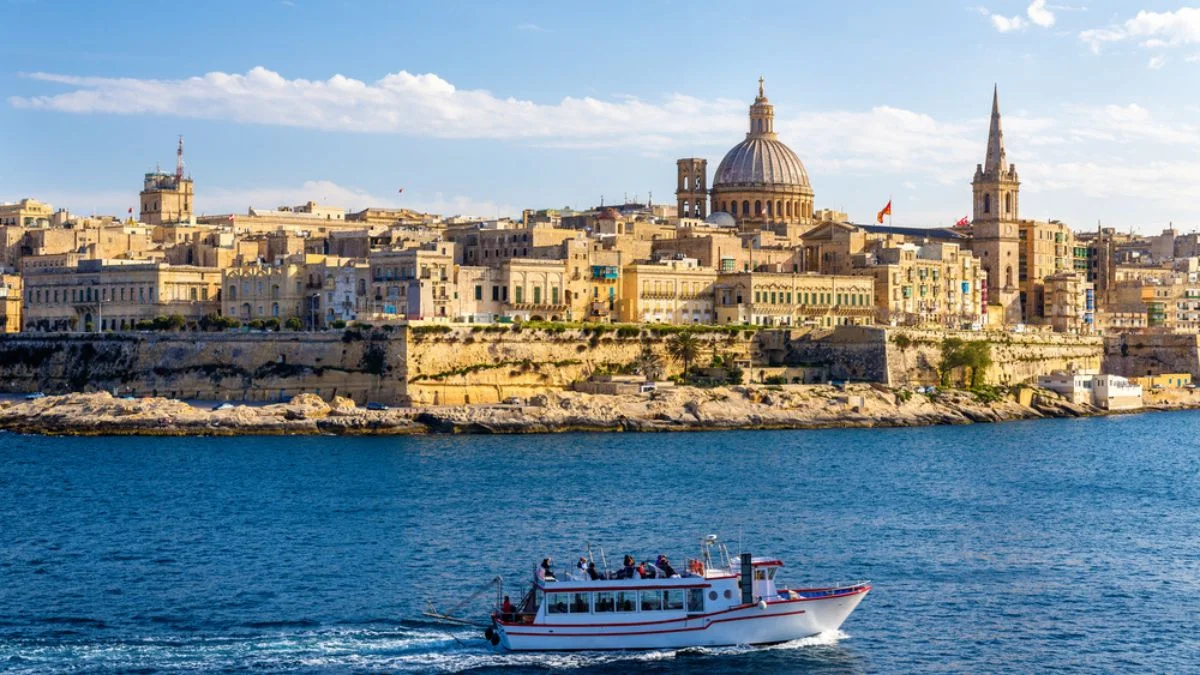
Tiny but mighty, Valletta is the capital of the island nation of Malta. Built by the Knights of St. John, its impressive fortifications and golden limestone buildings, like St. John’s Co-Cathedral, tell tales of its storied past. From the Upper Barrakka Gardens, one can enjoy panoramic views of the Grand Harbour.
Though steeped in history, Valletta isn’t stuck in time. The city streets come alive with festivals, theater, music, and art throughout the year. Its waterfront is a testament to its maritime legacy, while boutique hotels and modern eateries infuse a dose of the contemporary.
24. Riga, Latvia The Baltic Beauty
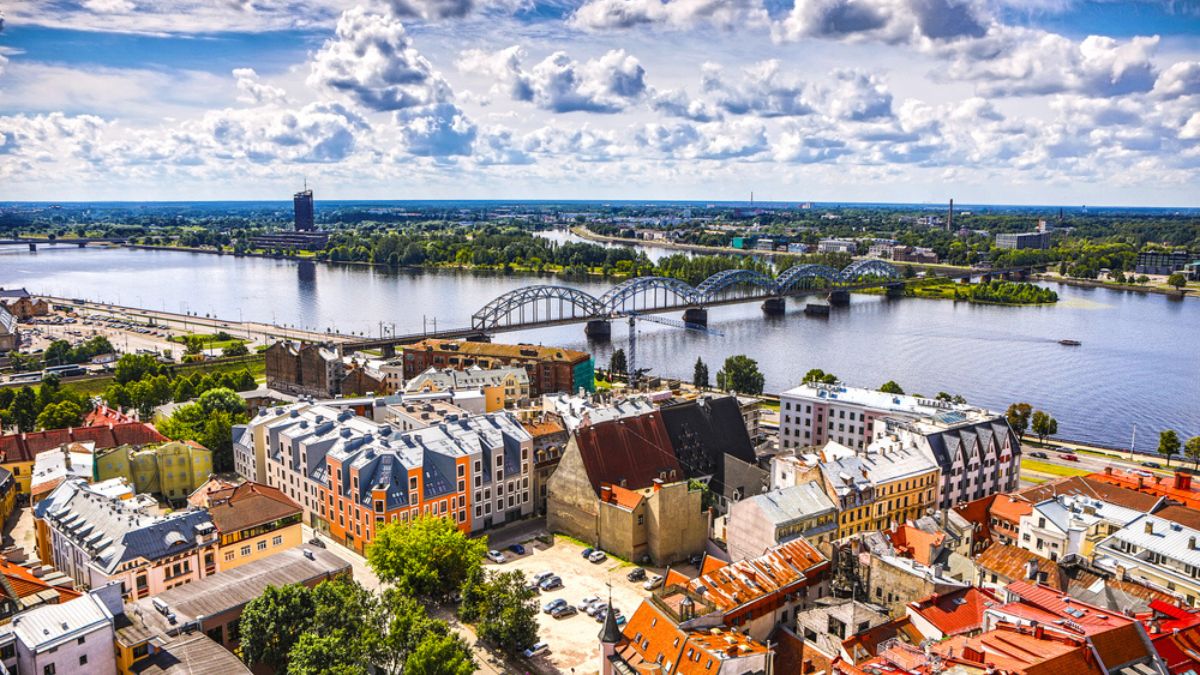
Riga, with its impressive Art Nouveau architecture and a UNESCO-listed Old Town, is a testament to Latvia’s rich history and culture. The Riga Cathedral and the House of the Blackheads stand as symbols of the city’s architectural grandeur.
Riga is not just about its historic allure. The Central Market pulses with life as locals and tourists alike explore its vast array of goods. The city’s parks, riverside, and the vibrant Miera Street offer a glimpse into the modern-day soul of Riga. It’s a city where medieval charm meets contemporary cool.
25. Vilnius, Lithuania The Baroque Beacon
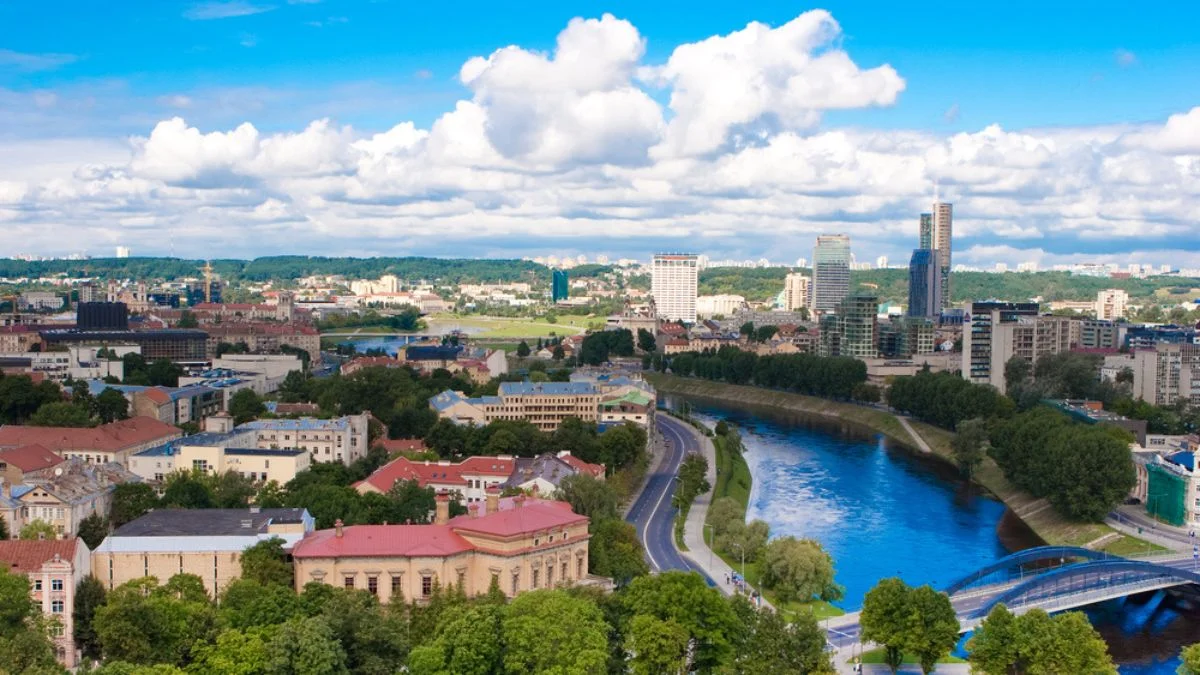
Vilnius, Lithuania’s capital, is a maze of narrow streets, Baroque churches, and hidden courtyards. The Gediminas’ Tower offers panoramic views of the city, while the Gate of Dawn, a chapel containing a revered icon, attracts pilgrims from near and far.
Beyond its historic heart, Vilnius is a city of vibrant culture and arts. The bohemian Užupis district, which humorously claims to be an independent republic, showcases the city’s quirky and creative side. From its bustling Pilies Street to serene spots by the Vilnia River, Vilnius is a blend of tradition and modernity.
26. Ljubljana, Slovenia The Green Capital of Europe
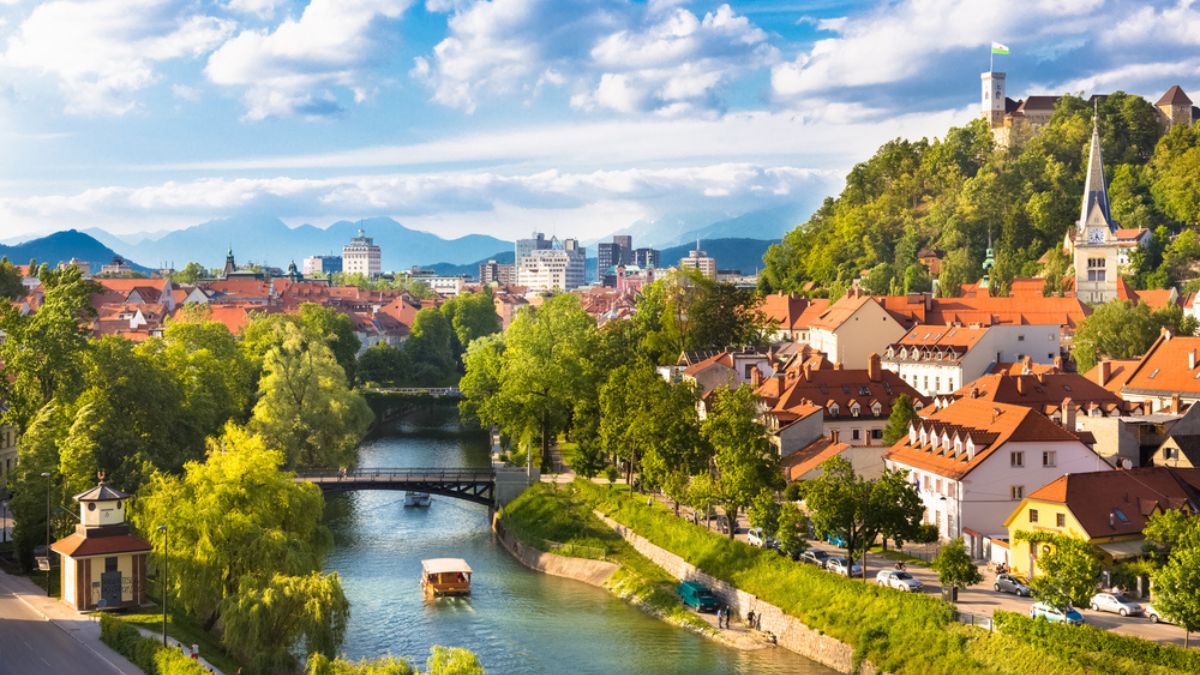
Ljubljana, the charming capital of Slovenia, is often lauded for its commitment to green initiatives. The Ljubljanica River meanders through the city, bridged by historic structures like the Triple Bridge and the Dragon Bridge. The medieval Ljubljana Castle looms over the city, providing a panoramic view of the surrounding landscapes.
Beyond its scenic beauty, Ljubljana offers a medley of experiences – from its bustling Central Market, laden with local produce, to its vibrant cultural events that resonate in the streets and squares. Combining history, sustainability, and a lively spirit, Ljubljana stands out as a European gem.
27. Chisinau, Moldova The Wine Capital of the East
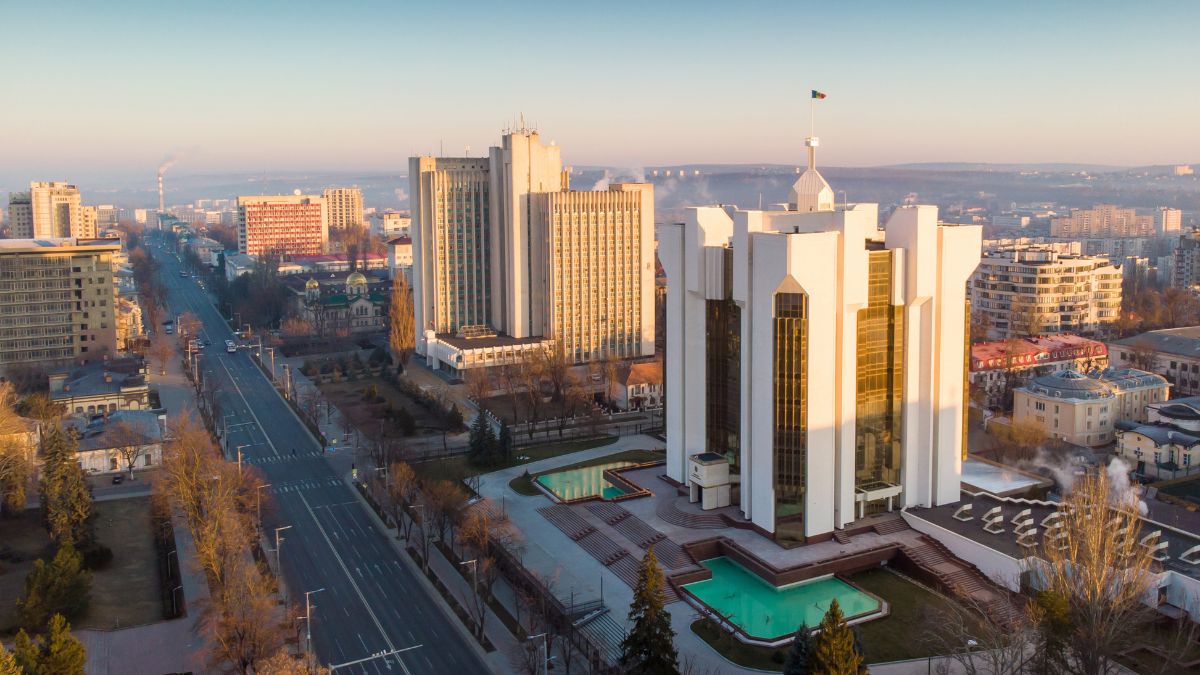
Chisinau, the capital of Moldova, offers a unique blend of Soviet architecture with a burgeoning contemporary culture. As the country is famed for its wine, the city’s cellars and wine festivals can’t be missed. The Cathedral Park, with its arch and the bell tower, stands as the city’s tranquil heart.
Though often overlooked in the European travel circuit, Chisinau surprises with its green boulevards, lively marketplaces, and the warm hospitality of its residents. The local cuisine, influenced by Romanian and Russian flavors, complements its vinous offerings.
28. Monaco, Monaco The Riviera Gem

The second smallest country in the world, Monaco is synonymous with luxury, casinos, and the annual Grand Prix. The Prince’s Palace and the Oceanographic Museum symbolize the city-state’s opulence and commitment to marine conservation, respectively.
Nestled on the French Riviera, Monaco is more than just its glitzy casino and luxury yachts. The Jardin Exotique offers a serene escape, while the narrow alleys of Monaco-Ville (the old town) provide a contrast to the grandeur of Monte Carlo. Here, opulence meets history in a dazzling dance.
29. Pristina, Kosovo The Newborn Capital
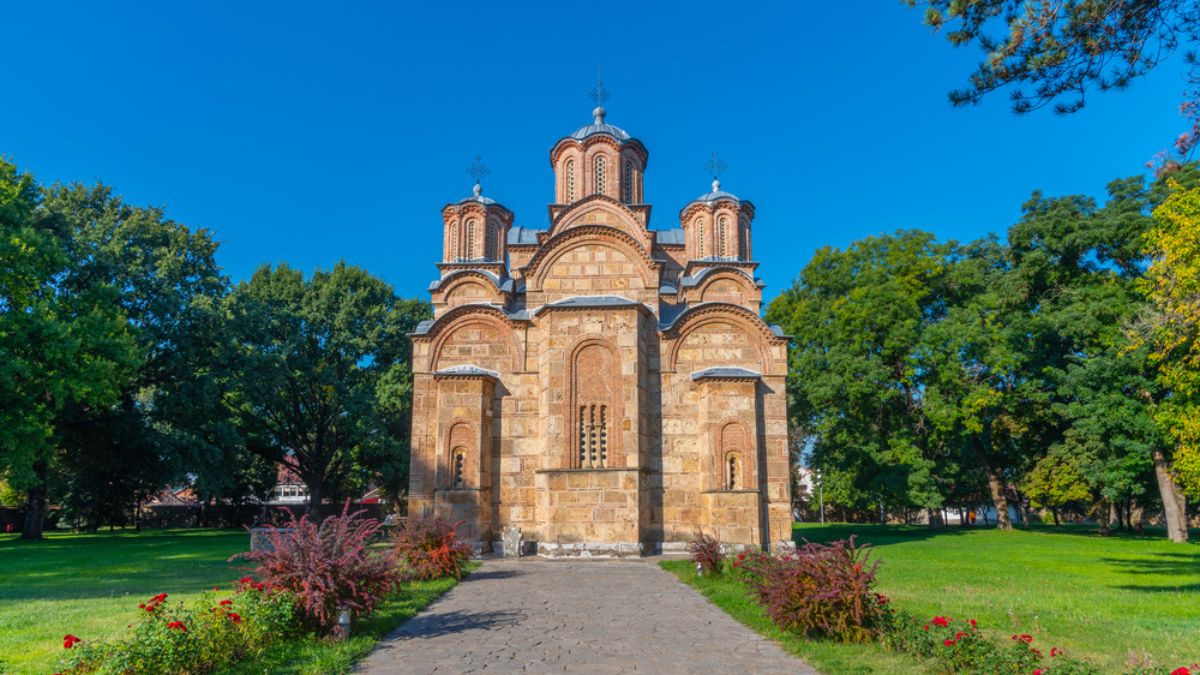
As the capital of one of Europe’s youngest countries, Pristina exudes a vibrant, youthful energy. The Newborn monument, repainted annually, symbolizes the nation’s rebirth and aspirations. The Imperial Mosque and the Gračanica Monastery showcase its rich, diverse religious heritage.
Modern cafes, galleries, and music venues are sprouting amidst remnants of its Ottoman past and socialist architecture. With a population where the majority are under 30, Pristina’s pulse is unmistakably forward-looking, making it an exciting European destination that’s off the beaten path.
30. Minsk, Belarus The Unsung Hero of the East
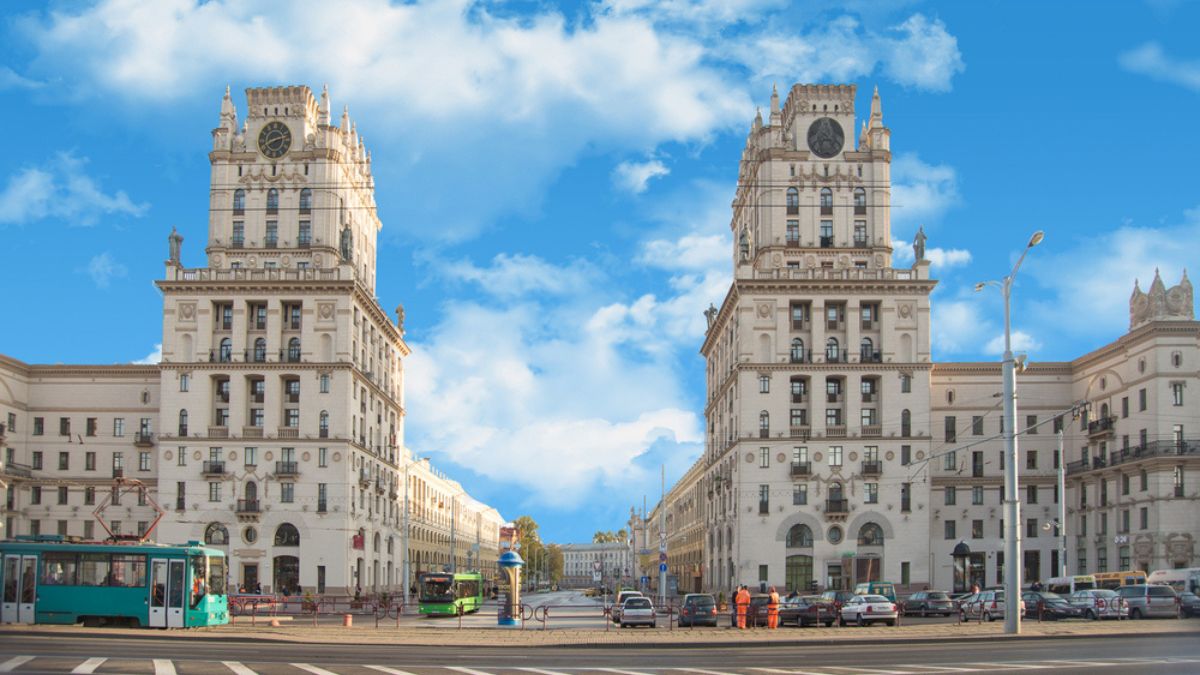
Minsk, with its expansive boulevards and Soviet-era architecture, is a city that’s gracefully evolving. The Island of Tears and Khatyn Memorial pay homage to its poignant history, while the modern National Library of Belarus showcases its progressive aspirations.
Frequently overlooked, Minsk offers a thriving arts scene, serene parks, and a growing array of cafes and nightspots. The city effortlessly marries its storied past with a buzzing undercurrent of modernity, inviting visitors to discover its multifaceted charm.
31. Podgorica, Montenegro The Emerging Balkan Gem
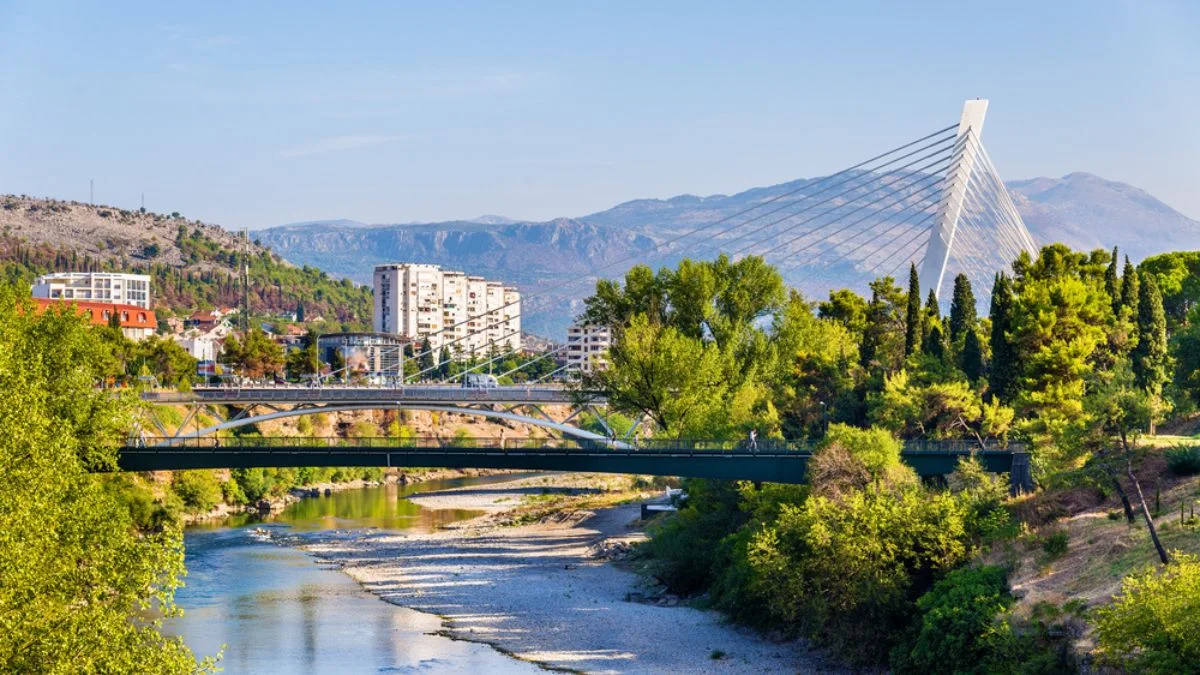
Though Montenegro is often praised for its Adriatic coastline, its capital, Podgorica, is carving out a reputation of its own. With a history spanning centuries, landmarks like the Millennium Bridge and the Clock Tower offer glimpses into its evolving identity.
Vineyards surround the city, and the nearby Skadar Lake provides a natural respite. As Montenegro’s cultural and educational center, Podgorica pulses with festivals, theater, and art exhibitions, making it a compelling stop in the heart of the Balkans.
32. Tirana, Albania The Colorful Metropolis
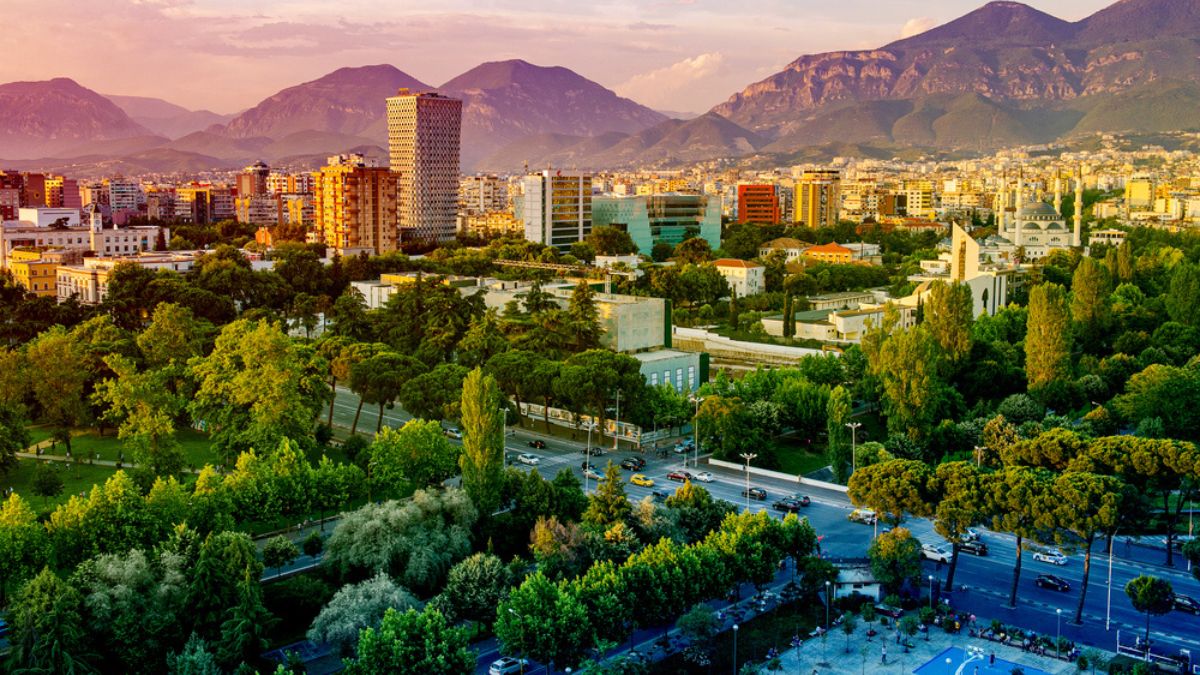
Once a gray, solemn city, Tirana has transformed into a vibrant metropolis bursting with colors. The city’s buildings, painted in bold hues, reflect its reinvigorated spirit. Skanderbeg Square, the city’s heart, is surrounded by important landmarks, including the National History Museum adorned with a large mosaic.
Beyond its lively cafes and burgeoning arts scene, Tirana serves as a gateway to Albania’s diverse landscapes, from its Adriatic coastline to its mountainous interior. The city’s revival makes it an intriguing blend of the old and the new.
33. Sarajevo, Bosnia and Herzegovina The Phoenix City
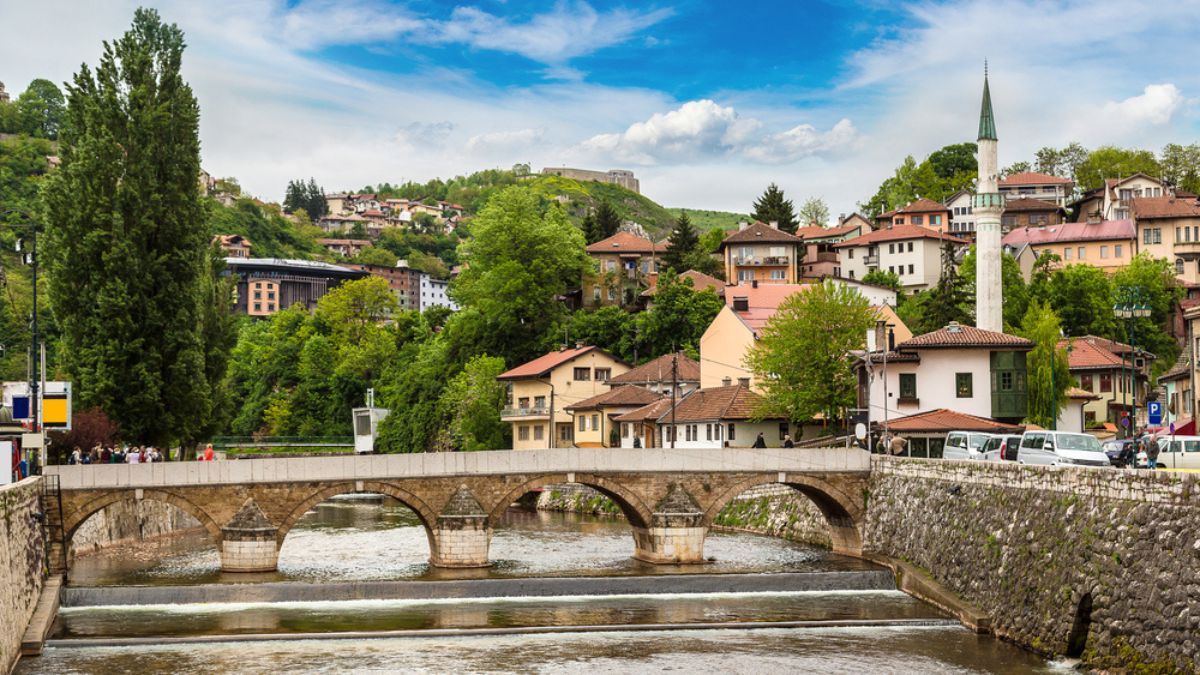
Sarajevo, often described as the “Jerusalem of Europe,” boasts a rich tapestry of cultures. Its skyline is dotted with minarets, church spires, and synagogues, echoing its diverse heritage. The scars from the 90s siege are still visible, but so is its indomitable spirit.
The Baščaršija, with its Ottoman flavors, offers a sensory feast. Museums, like the Sarajevo Tunnel Museum, capture poignant moments in its history. The city’s rebirth post-war is a testament to its resilience, making Sarajevo a destination of both historical gravitas and inspiring regeneration.
34. Skopje, North Macedonia The Crossroads of Cultures
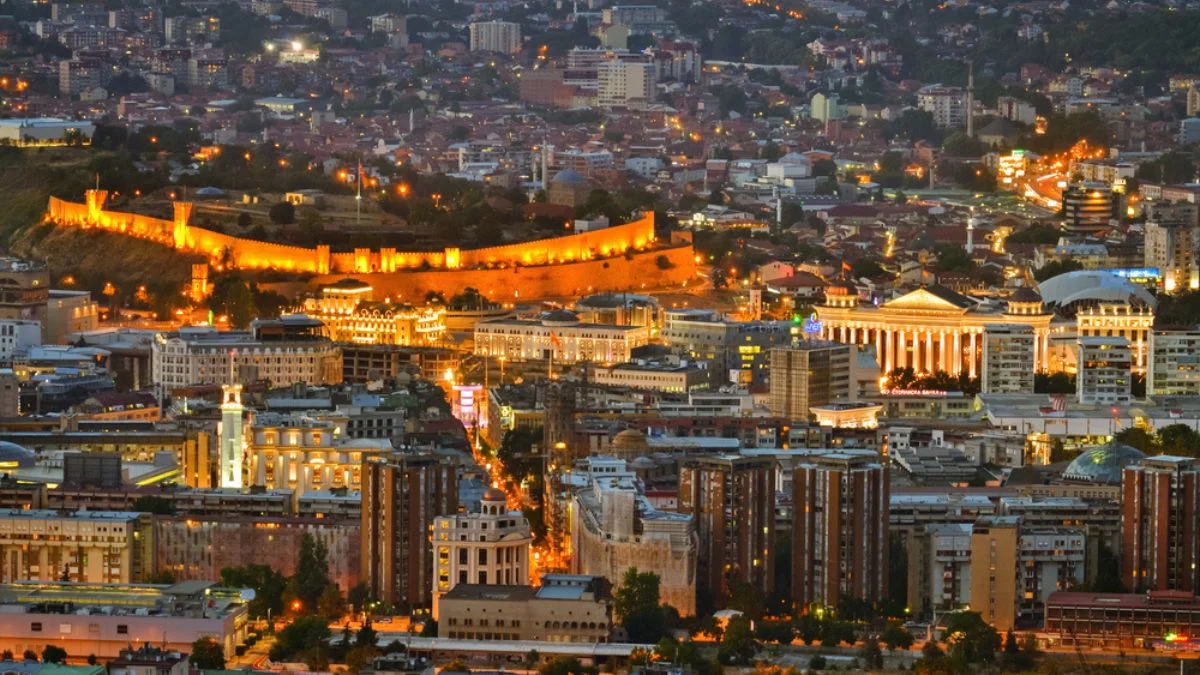
Skopje, sitting at the crossroads of East and West, is a mosaic of cultures and epochs. The Stone Bridge, connecting the city across the Vardar River, stands as a testament to its Byzantine and Ottoman past. Meanwhile, the modernist sculptures and buildings are part of the city’s more recent transformation.
The Old Bazaar in Skopje, one of the oldest and largest marketplaces in the Balkans, hums with life. With its fortresses, museums, and the nearby Matka Canyon, Skopje offers a diverse array of experiences for the curious traveler.
35. San Marino, San Marino The Mountainous Marvel
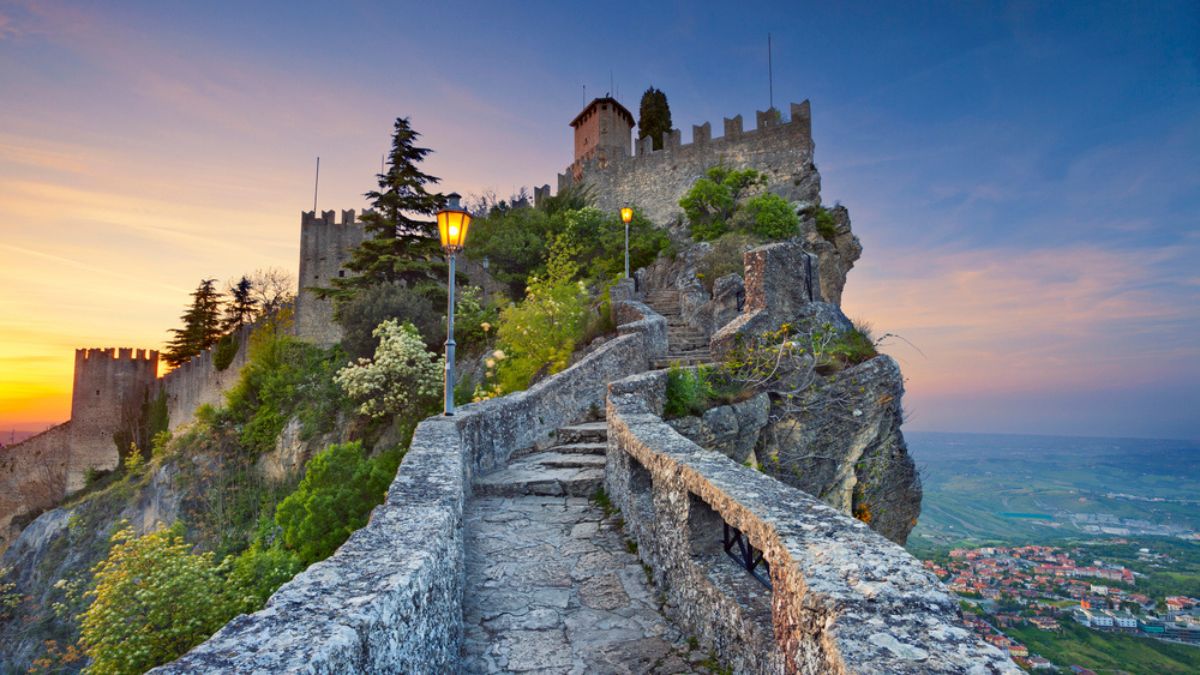
San Marino, the world’s oldest republic and fifth smallest country, sits atop a mountain, offering breathtaking views of the Italian landscape below. Its three towers, perched on Monte Titano, stand as symbols of its enduring freedom and independence.
Despite its small size, San Marino has a big heart. Its historic center, a UNESCO World Heritage site, is a blend of medieval architecture, cobblestone streets, and public squares, each echoing tales of its storied past. The republic may be diminutive, but its historical weight and panoramic beauty make it a must-visit.
36. Gibraltar, Gibraltar The Rock of Resilience
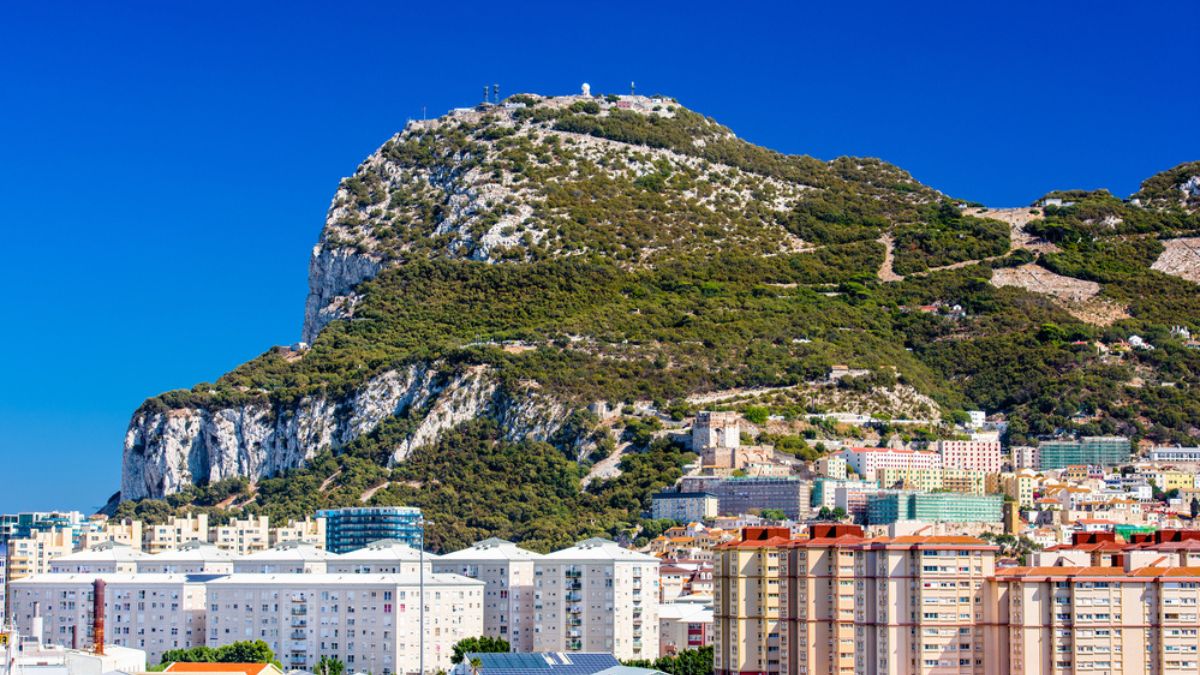
Gibraltar, a British Overseas Territory, stands at the crossroads of the Mediterranean Sea and the Atlantic Ocean. Dominated by the Rock of Gibraltar, this small territory boasts a unique blend of Andalusian and British influences. The Europa Point Lighthouse, overlooking the strait, is a beacon signaling both history and maritime significance.
The St. Michael’s Cave, with its natural limestone formations, hosts concerts in a surreal setting. Streets lined with British-style pubs and the famous Barbary macaques further highlight Gibraltar’s eclectic charm. As a melting pot of cultures with stunning vistas, Gibraltar offers more than what meets the eye.
37. Vaduz, Liechtenstein The Alpine Oasis

Nestled in the heart of the Alps, Vaduz serves as the capital of the tiny principality of Liechtenstein. The Vaduz Castle, perched on a hill overlooking the city, is a symbol of the nation’s reigning monarchs and offers striking views of the Rhine valley.
While Vaduz is the political and economic center, it’s also a haven for art lovers with the Kunstmuseum showcasing contemporary and modern art. Despite its size, Vaduz exudes a grandeur complemented by a serene alpine setting, making it a unique European destination.
38. Nicosia, Cyprus The Divided Capital
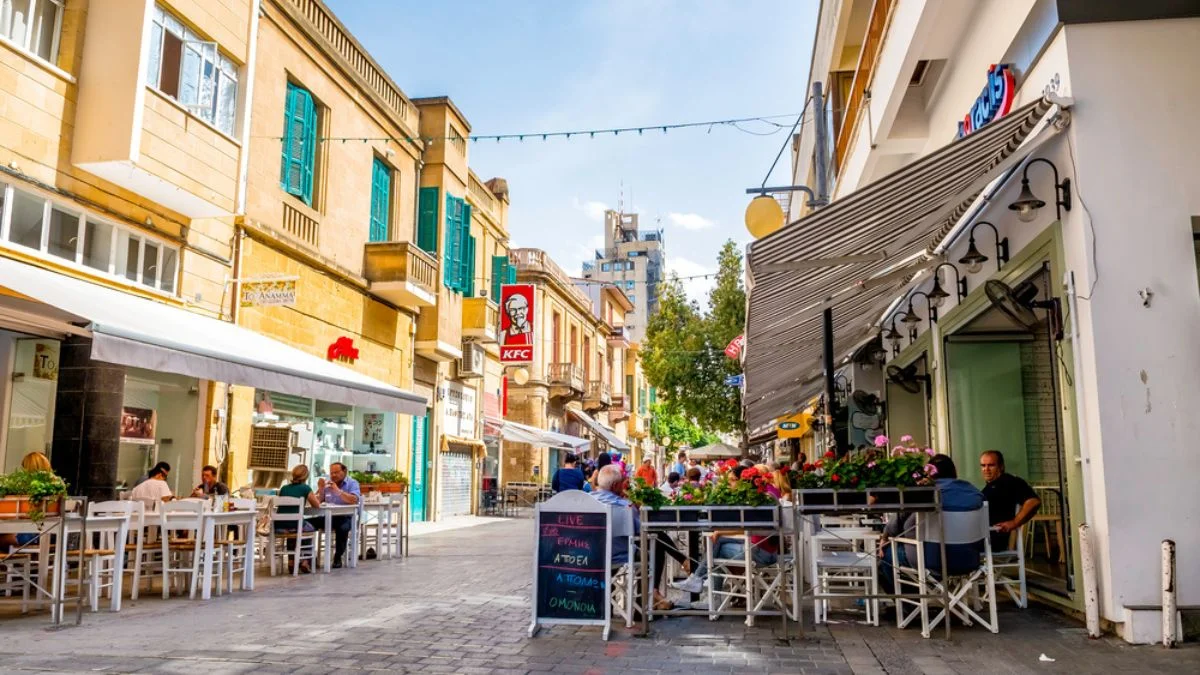
Nicosia, the last divided capital in the world, tells tales of a complex history where Greek and Turkish cultures merge. The Venetian walls, once built to guard the city, now stand as silent witnesses to the passage of time. Within, Ledra Street bustles with activity, lined with shops, cafes, and glimpses of the buffer zone that splits the city.
While the Green Line reminds visitors of past tensions, Nicosia is also a city of unity, culture, and growth. From its rich archaeological museums to its thriving arts scene, it is a city that invites exploration and understanding.
39. Bratislava, Slovakia The Danube Delight

Situated on the banks of the Danube River, Bratislava captivates with its blend of old-world charm and modern vibrancy. The Bratislava Castle, atop a hill, dominates the cityscape and provides a panoramic view of this Slovak capital and neighboring Austria and Hungary.
The Old Town is a pedestrian’s delight, with its medieval towers, baroque palaces, and lively squares. While its historical heart pulses with stories, Bratislava’s modern quarters, like the Eurovea complex on the riverbank, reflect a city embracing the future with enthusiasm.
40. London, United Kingdom The Timeless Metropolis

London, the historic heart of the British Empire and a global city of the modern age, sprawls majestically along the Thames River. From the ancient Tower of London to the avant-garde Shard, it’s a city where history and progress intertwine seamlessly. The iconic Big Ben and the Houses of Parliament stand as testaments to the city’s storied past, while the London Eye offers panoramic vistas of an ever-evolving skyline.
The cultural tapestry of London is as diverse as its populace, reflected in areas from the bustling markets of Camden Town to the museums of Kensington. Whether taking a stroll in Hyde Park, exploring the eclectic streets of Shoreditch, or experiencing the grandeur of Buckingham Palace, London encapsulates a blend of regal legacy, artistic innovation, and the indefatigable spirit of a world city.
41. Tallinn, Estonia The Baltic Digital Hub
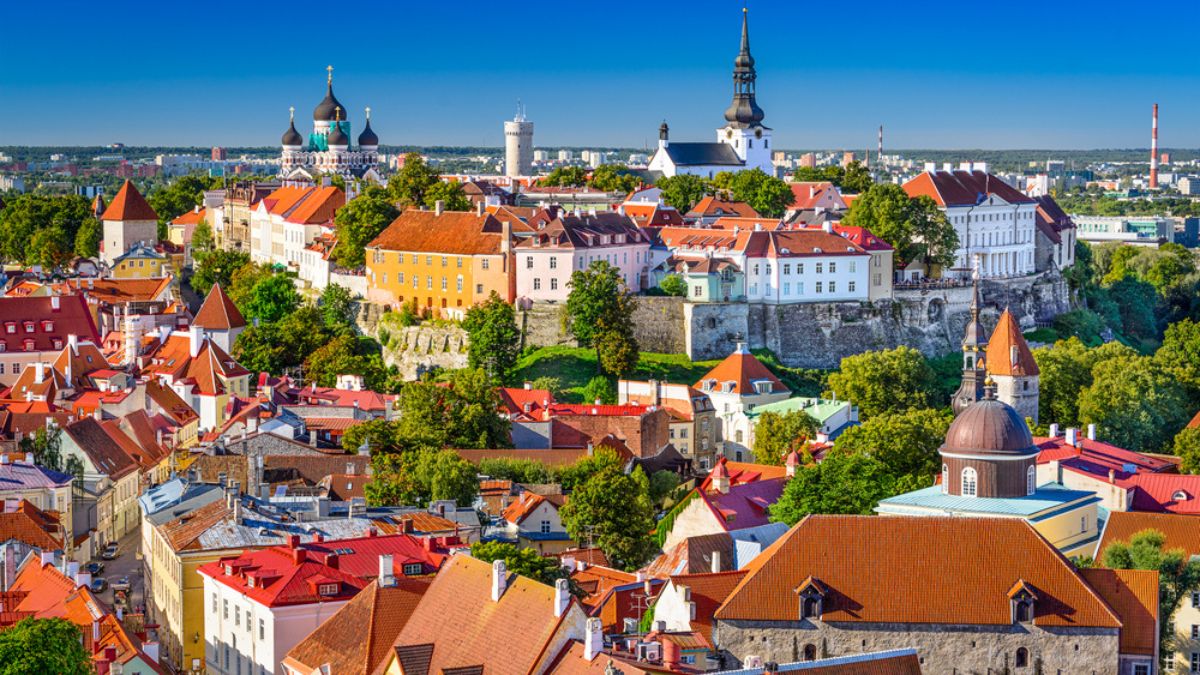
Tallinn, with its medieval old town, stands as a testament to Estonia’s rich history. From the Alexander Nevsky Cathedral to Toompea Castle, the city is a UNESCO World Heritage site. But, Tallinn also boasts another identity: that of a modern digital hub.
Regarded as Europe’s Silicon Valley, it’s a birthplace for many international tech companies and startups. A seamless blend of the past and future, Tallinn offers both cobblestone allure and the promise of the digital age.
42. Andorra la Vella, Andorra Mountainous Splendor
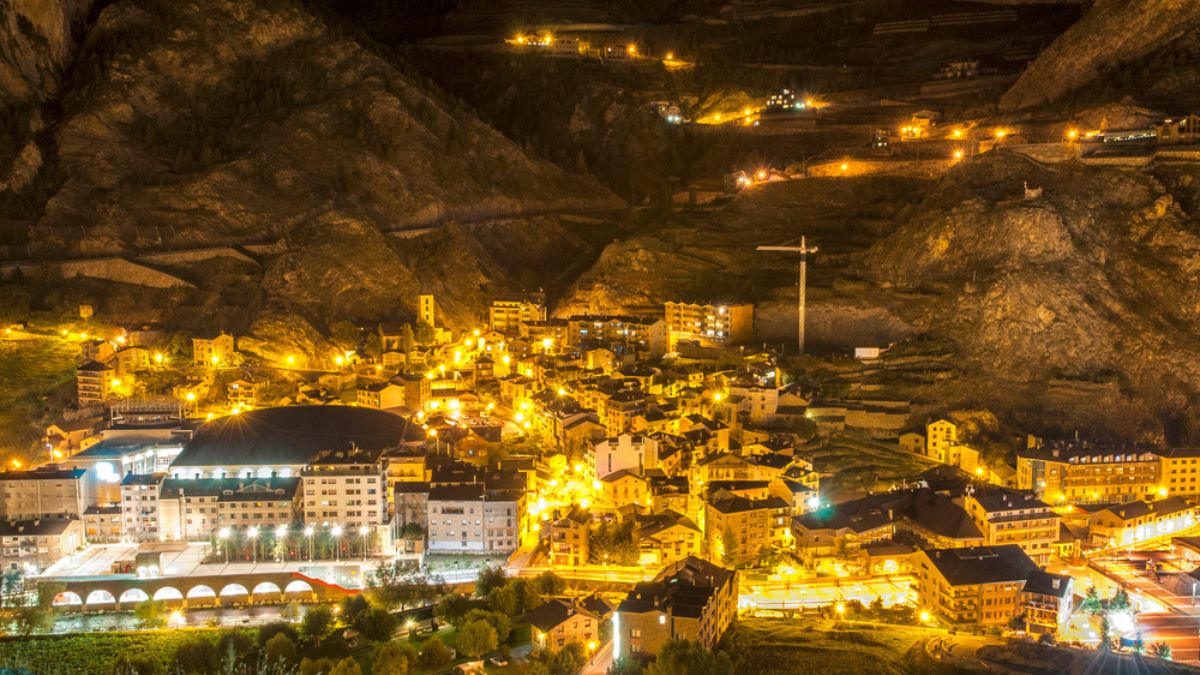
Andorra la Vella, Europe’s highest capital, is nestled in the Pyrenees between France and Spain. Renowned for its ski resorts and tax-free shopping, it’s a magnet for tourists seeking both thrill and leisure.
Despite its modern amenities, traces of its ancient past, like the Church of Santa Coloma and Casa de la Vall, remain intact. With breathtaking mountain views and winding valleys, Andorra la Vella presents a unique mix of natural beauty and urban sophistication.
43. Luxembourg City, Luxembourg The Heart of Europe
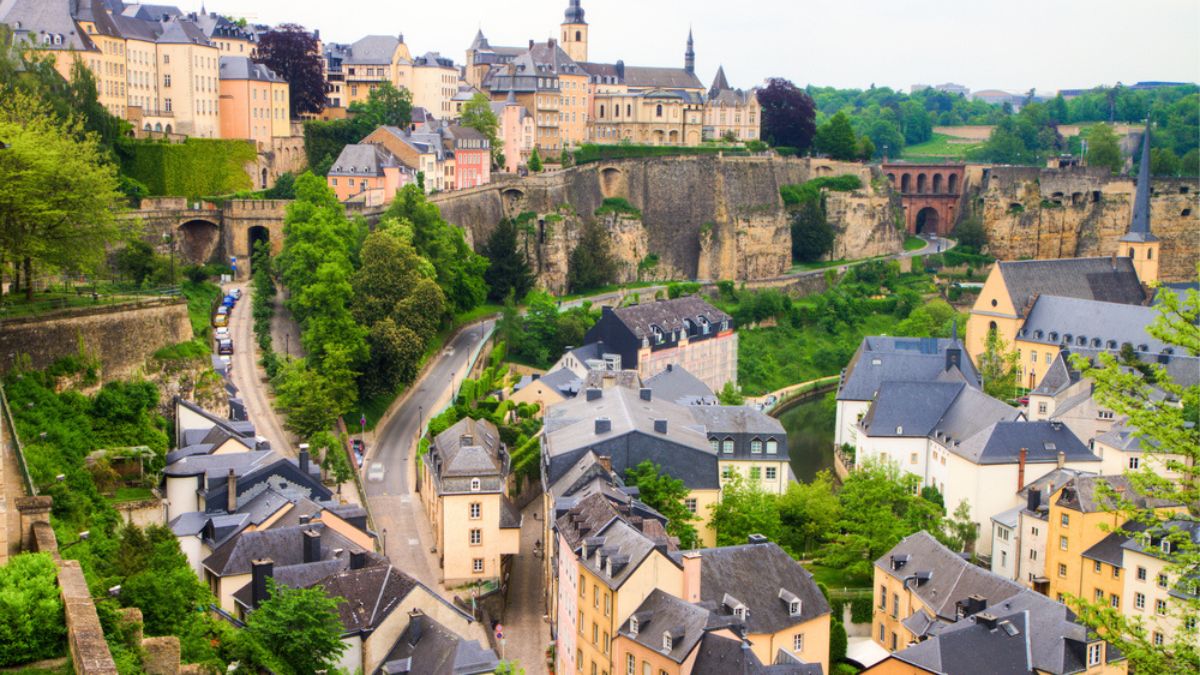
Perched atop cliffs overlooking the confluence of the Alzette and Pétrusse rivers, Luxembourg City blends its medieval past with its role as a modern European hub. Its Old Quarters, a UNESCO site, showcases fortifications and the Grand Ducal Palace.
As the seat of several European institutions, it’s a melting pot of European cultures, reflecting its significance and central location on the continent. A journey through Luxembourg City reveals layers of history, diplomacy, and multiculturalism.
44. Edinburgh, Scotland (UK) The Scottish Enchantress
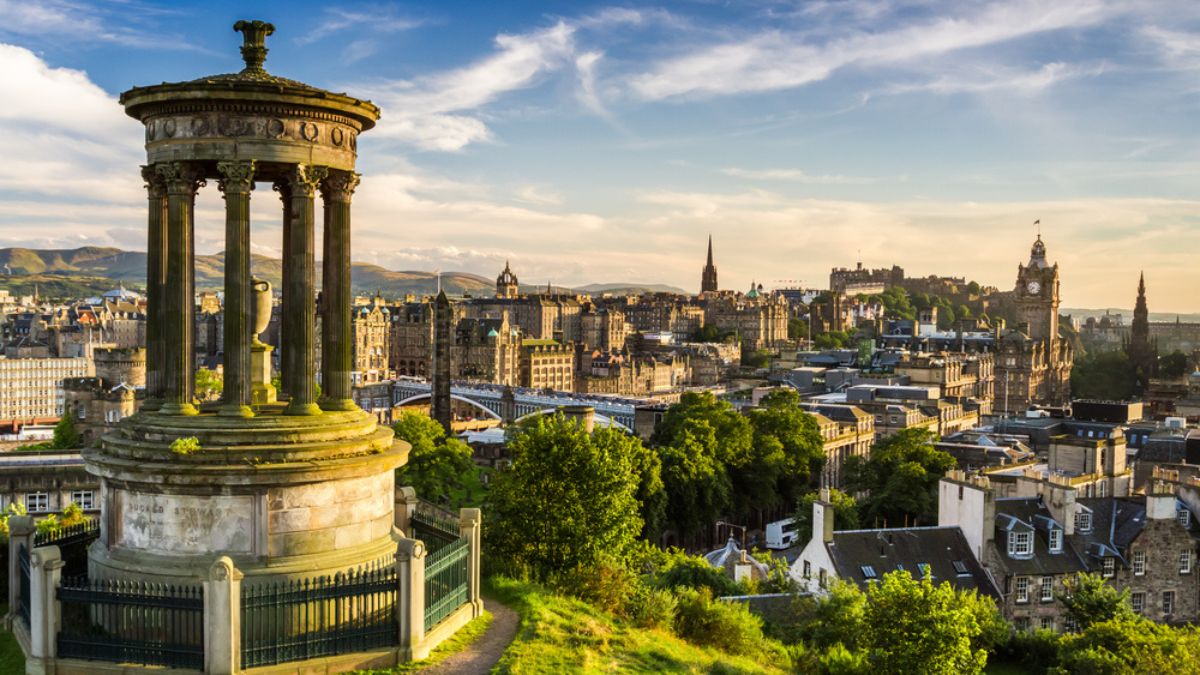
Edinburgh, Scotland’s capital, captivates with its dramatic landscapes and deep-rooted history. Dominated by the Edinburgh Castle, which stands on an extinct volcanic rock, the city effortlessly fuses its medieval past with a vibrant contemporary culture.
The Royal Mile, leading from the Castle to Holyrood Palace, is lined with historical buildings, shops, and pubs. Every year, the city comes alive with the Edinburgh International Festival and the Fringe, the world’s largest arts festival. Offering a mix of history, art, and the mysterious allure of its narrow alleys, Edinburgh remains an unforgettable European destination.
45. Nuuk, Greenland The Arctic Metropolis
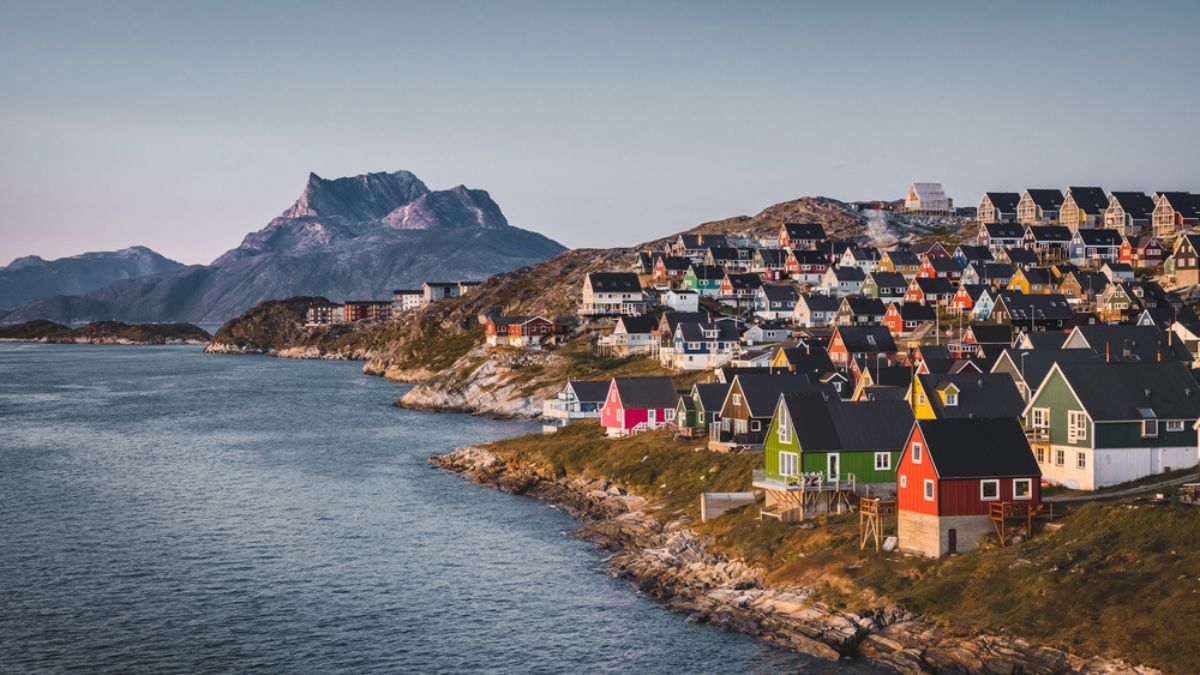
Nuuk, the capital of Greenland, stands as a beacon of modernity against the vast Arctic wilderness. With the Greenland National Museum preserving the island’s Inuit heritage and the Nuuk Art Museum showcasing Greenlandic art, the city is the cultural heart of this vast territory.
Nuuk’s Colonial Harbour, with its colorful houses, paints a picturesque scene against the backdrop of the Sermitsiaq Mountain. As the northernmost capital in the world, Nuuk offers visitors a unique blend of contemporary life, ancient traditions, and untouched nature, from the midnight sun to the mesmerizing northern lights.
46. Dubrovnik, Croatia The Adriatic Pearl
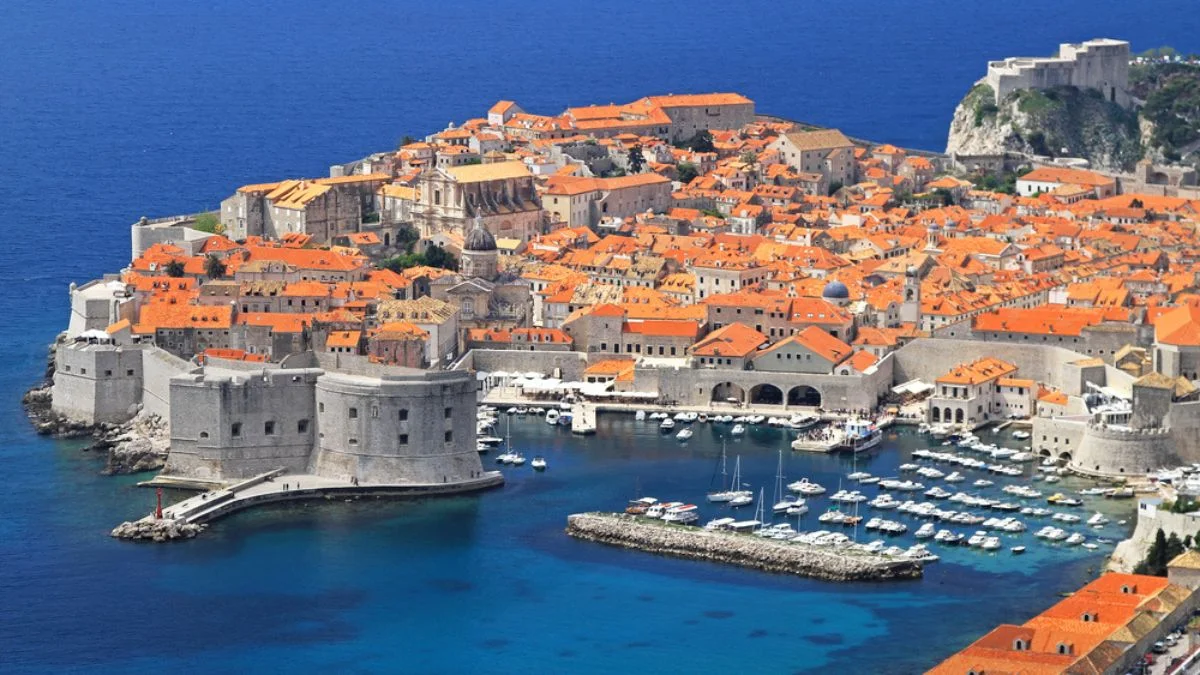
Dubrovnik, with its fortified walls and shimmering Adriatic backdrop, is a historical gem. The city’s Old Town, a UNESCO World Heritage site, is a maze of cobblestone streets filled with Gothic, Renaissance, and Baroque buildings.
The city, which once stood as the capital of the maritime Republic of Ragusa, boasts landmarks such as the Rector’s Palace and the Franciscan Monastery. From walking the walls to lounging on Banje Beach, Dubrovnik seamlessly melds its rich past with the allure of the Mediterranean.
47. Istanbul, Turkey The Crossroads of Continents

Istanbul, a city that spans Europe and Asia, is a mosaic of cultures. Its rich tapestry of history is evident in the Hagia Sophia, a church turned mosque turned museum, and the Topkapi Palace, once home to Ottoman sultans.
The bustling Grand Bazaar and the aromatic Spice Market offer a sensory feast. With the serene Bosphorus dividing the city, Istanbul is where the minarets of mosques rise against a skyline of modernity, and where ancient traditions blend with contemporary rhythms.
48. Tórshavn, Faroe Islands The Nordic Enchantment

Tórshavn, the capital of the Faroe Islands, is a blend of the quaint and the modern. With its historic wooden houses in Tinganes and the Faroese Parliament, one of the oldest in the world, the city echoes tales of Viking settlers.
Its modern harborside speaks of its growth and development. Overlooking the North Atlantic, Tórshavn offers a mix of rugged landscapes, sheep-dotted pastures, and a deep-rooted maritime culture. This city, under the gentle dance of the aurora borealis, is a testament to the enduring spirit of the Faroese people.
49. Oral (Uralsk), Western Kazakhstan The European Outpost
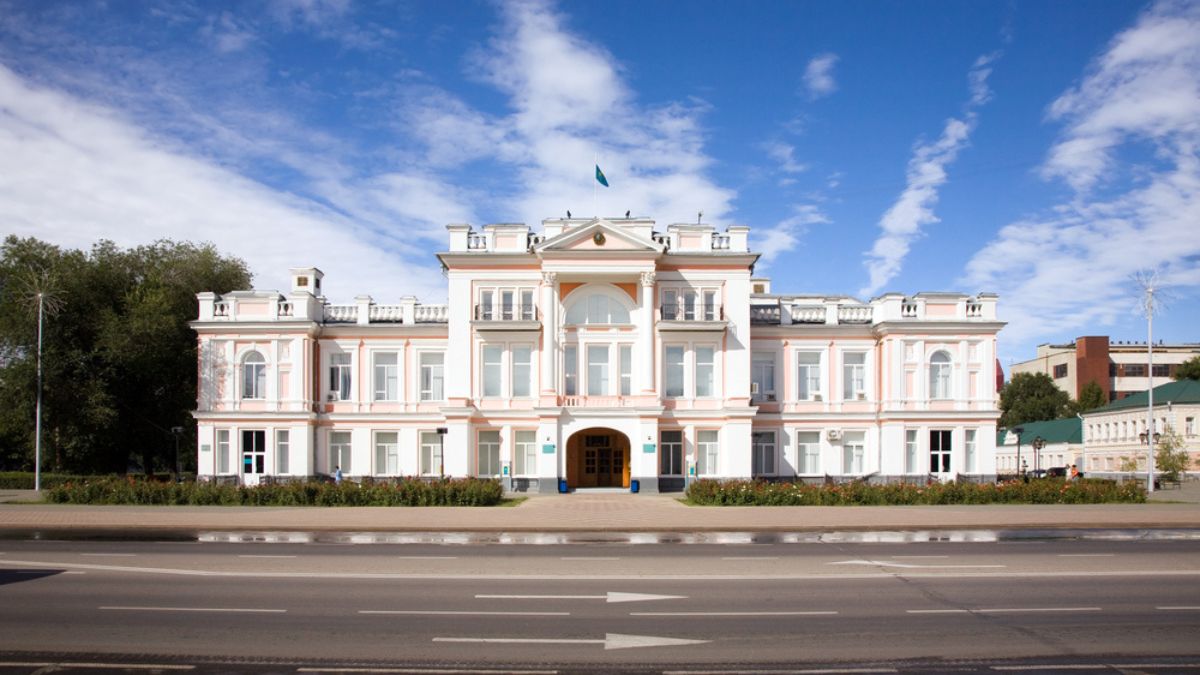
Oral, known as Uralsk in Russian, lies at the cusp of Europe and Asia, bordered by the Ural River. With its rich Cossack history and monuments such as the Cathedral of the Christ the Savior and the Ural’s Mosque, the city reflects a confluence of cultures.
As the gateway to the vast steppes of Kazakhstan, Oral showcases a blend of Russian and Kazakh influences, from its architecture to its cuisine. Here, where the horizons stretch endlessly, the city stands as a symbol of the expansive Kazakh heartland’s embrace of its European edge.
50. Kyiv (Kiev), Ukraine The Golden-Domed Capital
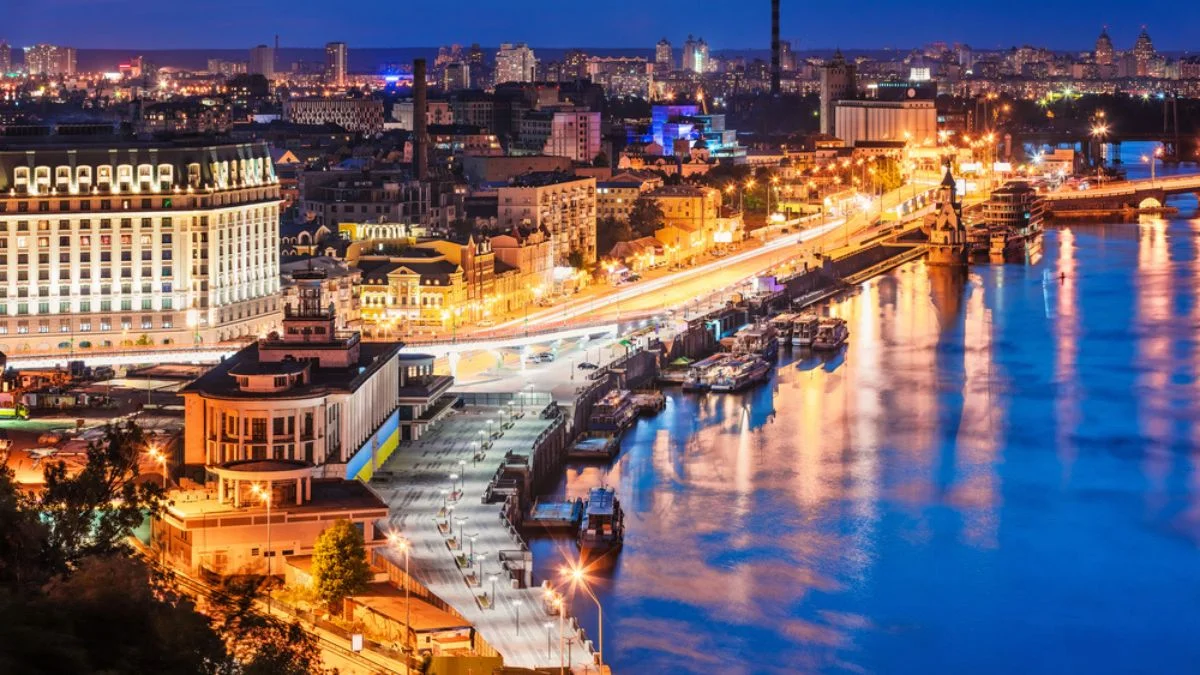
Kyiv, the historic capital of Ukraine, rises along the banks of the Dnipro River, bearing witness to millennia of vibrant history. The city’s roots trace back to the ancient Kievan Rus civilization, and its spiritual heart, the Kyiv Pechersk Lavra, is a sprawling monastery with golden domes and catacombs that whisper tales of saints and ascetics.
Above ground, Kyiv is an urban spectacle of modernity juxtaposed against tradition. The Maidan Nezalezhnosti (Independence Square) has been the epicenter of the nation’s aspirations and struggles, while Andriyivskyy Descent showcases the city’s artistic spirit. With its lush parks, iconic St. Sophia’s Cathedral, and the contemporary pulse of its streets, Kyiv is a captivating blend of the old Slavic soul and the dynamic European spirit.

